Dragonflies and Damselflies (Order Odonata) of Mutinondo Wilderness
Dragonflies and damselflies develop from aquatic "nymphs", which resemble pale, squat adults, with wings developing externally. All are accomplished predators in both life stages; nymphs preying on aquatic invertebrates, tadpoles and small fish, and adults preying primarily on other flying insects. Adults are occasionally mistaken for lacewings and large robberflies. This list is comprised entirely of species recorded in November 2018, and February-March 2019, and there are certainly many more species present that are yet to be added here.
Emperor Dragonflies – Family Aeshnidae
Large to enormous, long-lived and strong-flying dragonflies., often conspicuous but rarely (except sometimes Gynacantha) abundant. Adults are not usually strongly associated with water.
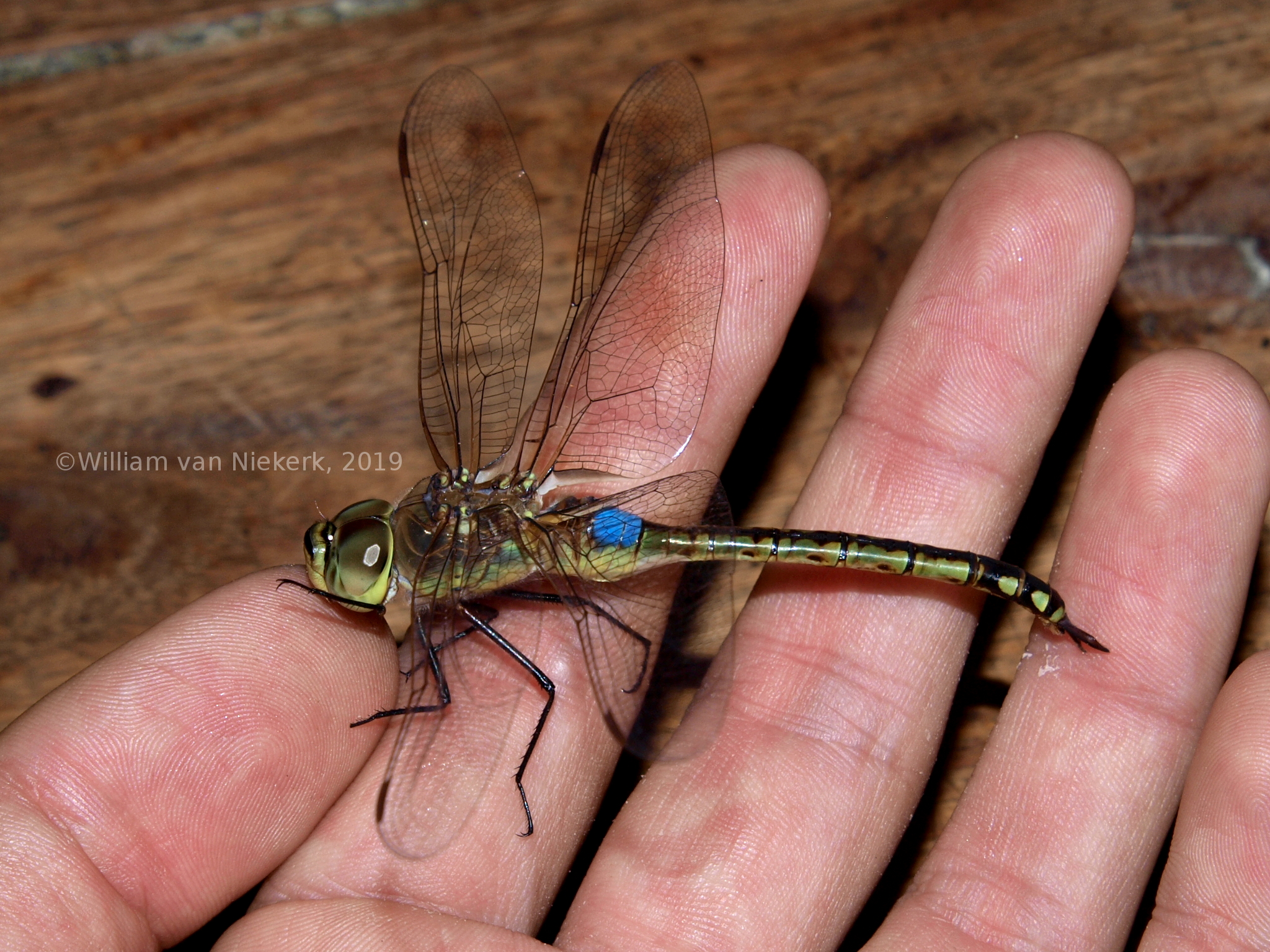
- Anax ephippiger (Vagrant Emperor) – Found almost everywhere, but rarely common; most readily found resting on vegetation at night, but occasionally enters buildings.
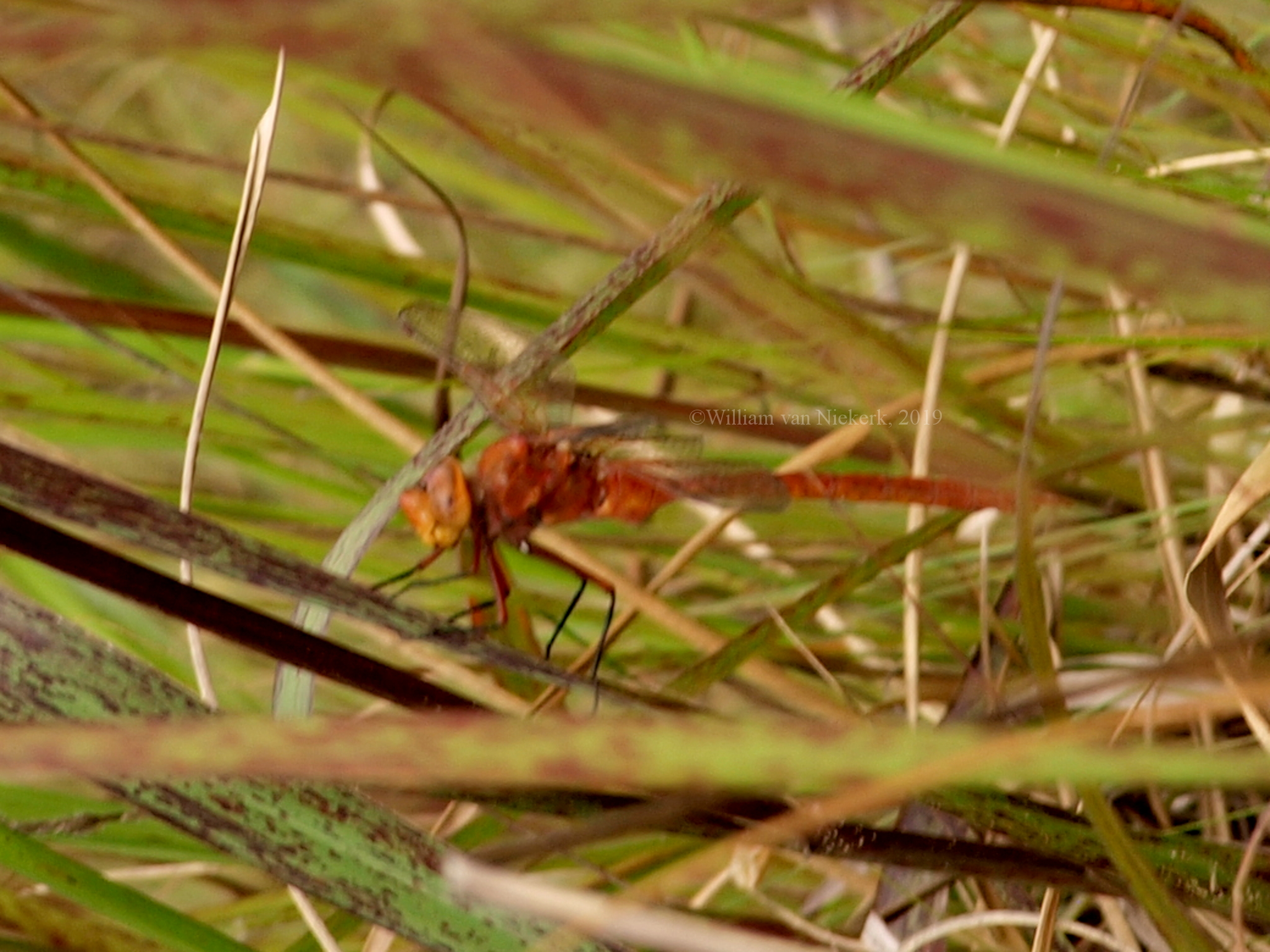
- Anax speratus (Orange Emperor) - reliably seen relentlessly patrolling vegetated areas of larger rivers, rarely settling.
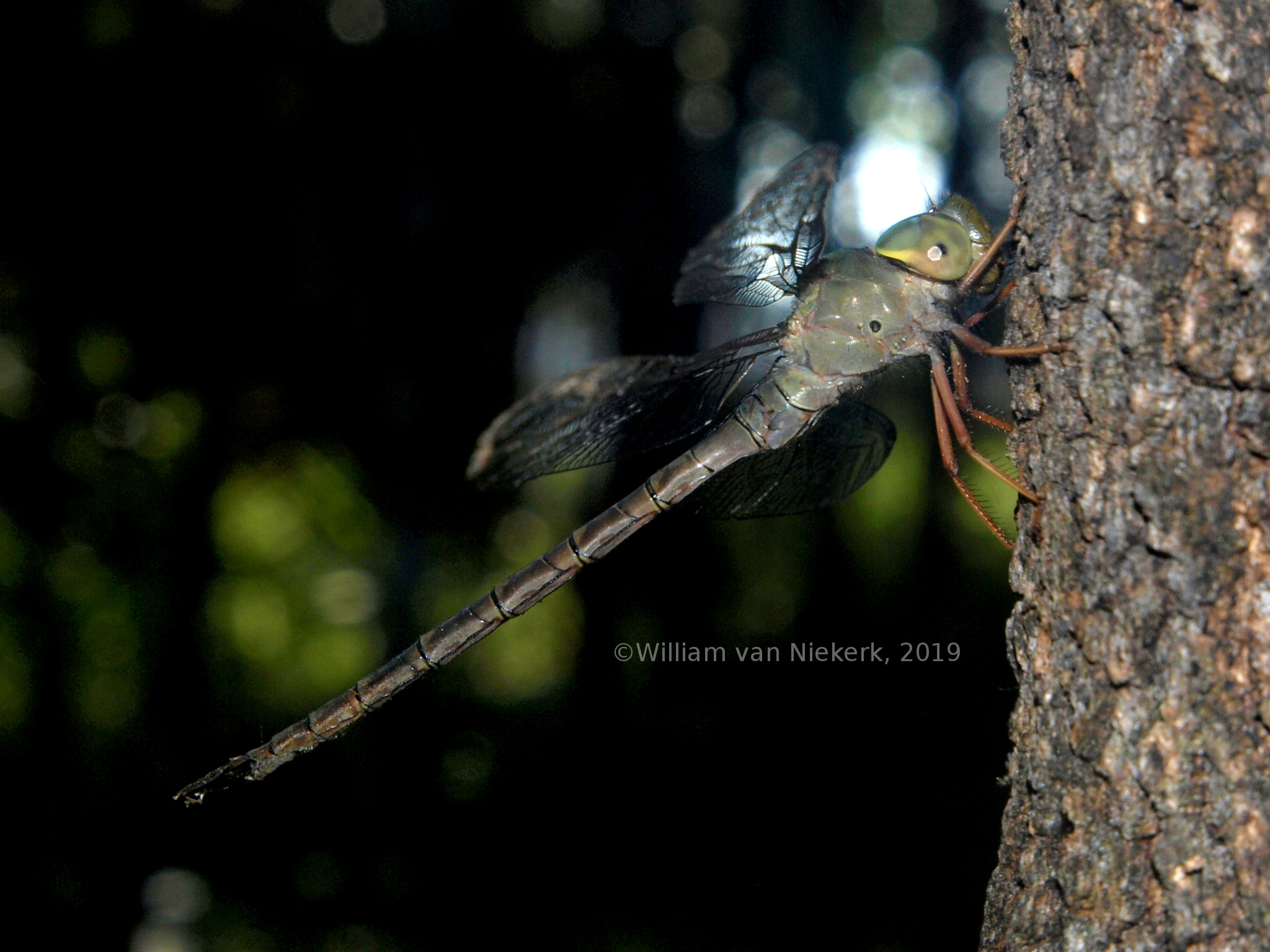
- Gynacantha villosa – Generally common in woodland and forest areas, mostly roosting in dense vegetation during the day, patrolling territories – often in groups – by dusk and dawn. Often attracted to lights in buildings. ..
Clubtail Dragonflies – Family Gomphidae
Generally large dragonflies, in Zambia usually most conspicuous on larger bodies of water among woodland. Males rarely return to water once adult; mating takes place several kilometres from water, with the female returning alone to lay her eggs.
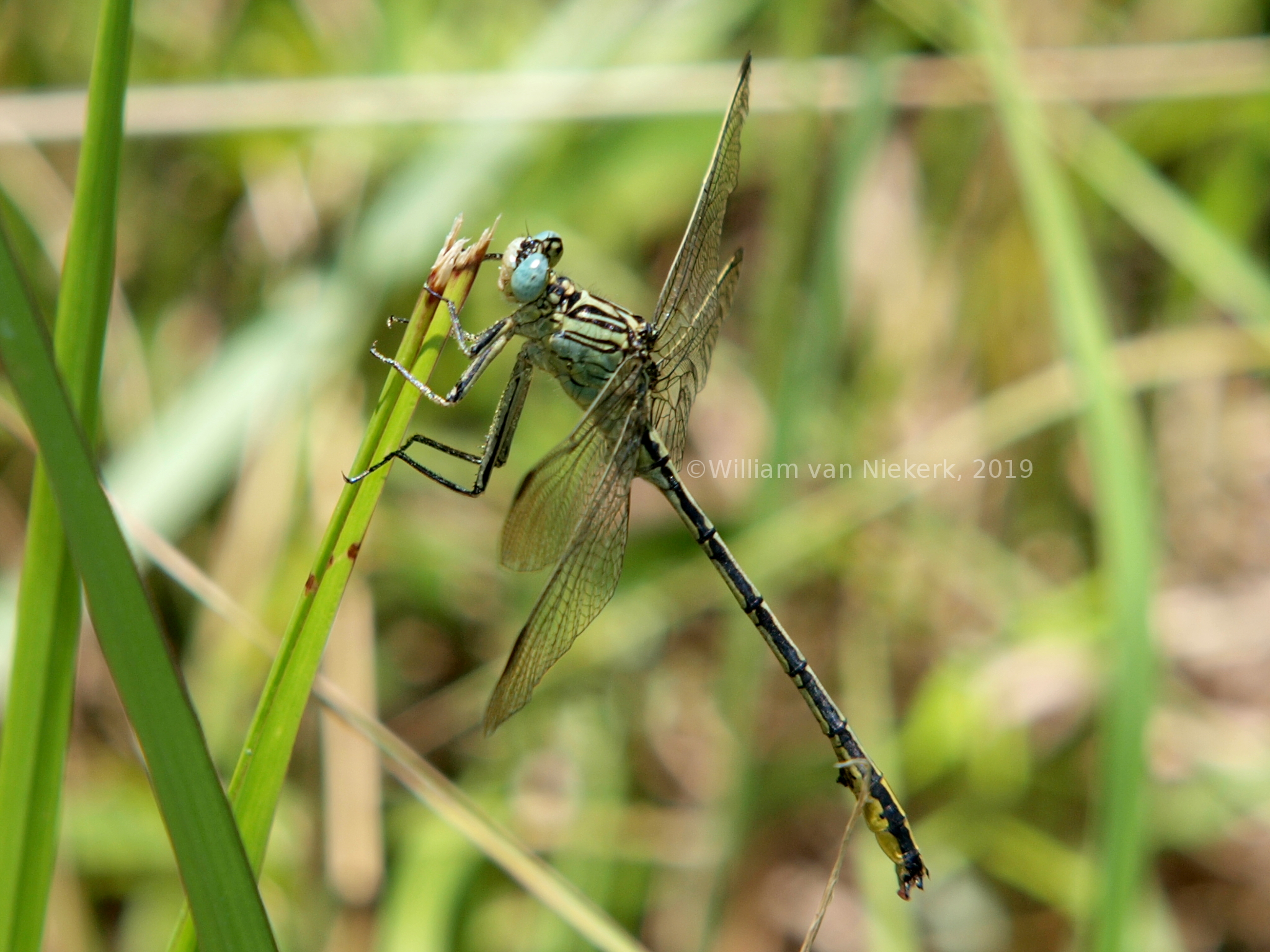
- Notogomphus praetorius (Yellowjack Longleg) – Widespread from South Africa to southern DRC; found in a wide variety of habitats, but usually preferring rocky streams and rivers in woodland or forest. Rarely abundant.
-
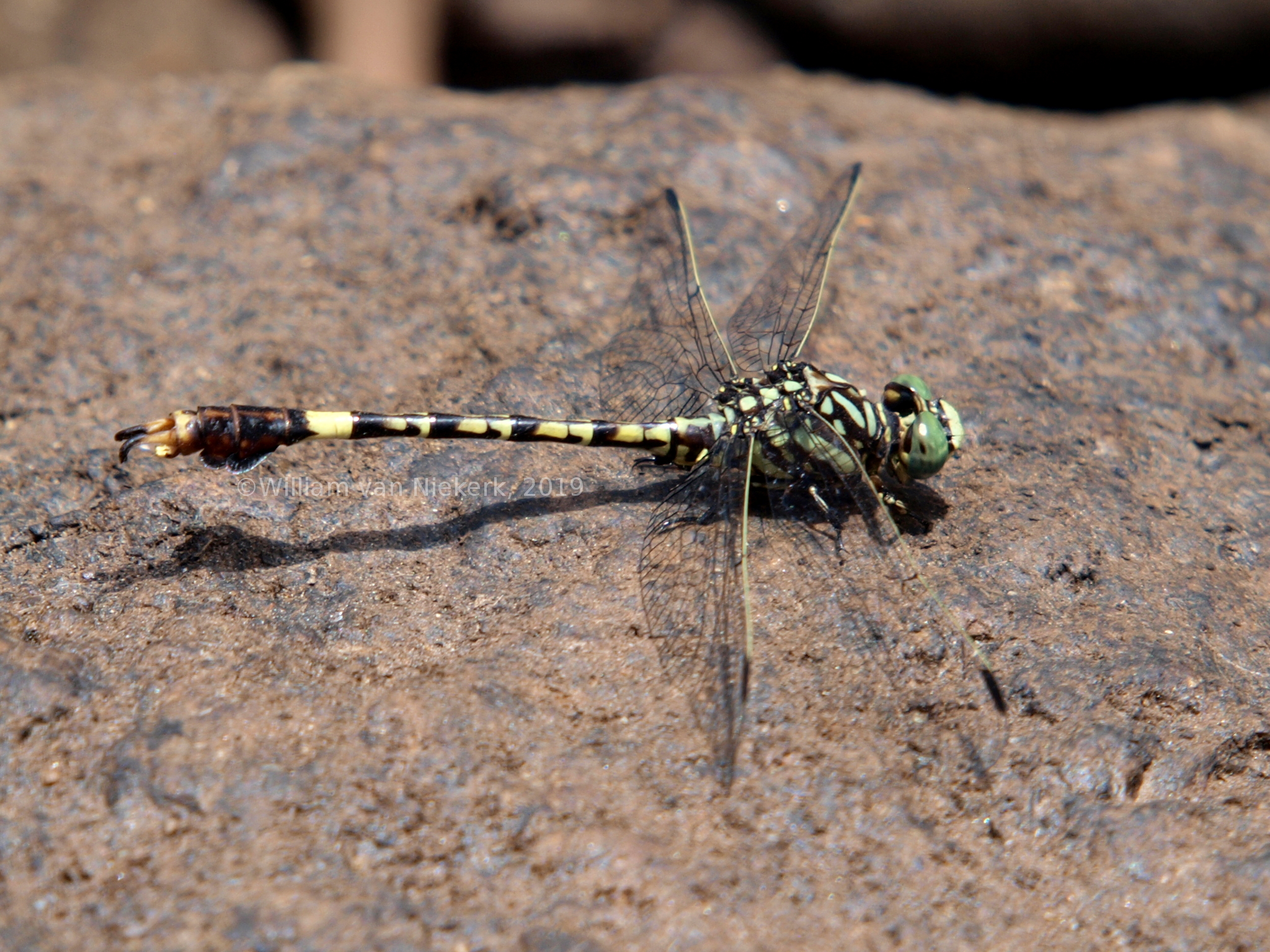
- Paragomphus cognatus (Rock Hooktail) – Widespread, but generally scarce; breeds rocky streams with gravel/sand beds, and is most readily found in areas of relatively rapid flow.
-
- Lestinogomphus cf. angustus (Spined Fairytail) – Widespread, and relatively common in some areas; at Mutinondo, appear to favour seepage grasslands on inselbergs (not yet photographed), and apparent breeding behaviour in these habitats may indicate that their nymphs prey on tadpoles of the endemic frog Ptychadena mutinondoensis elsewhere, typically along large rivers surrounded by dense woodland.
Skimmer Dragonflies – Family Libellulidae
Small (for dragonflies) to large, usually the most common and conspicuous dragonflies over much of Zambia.
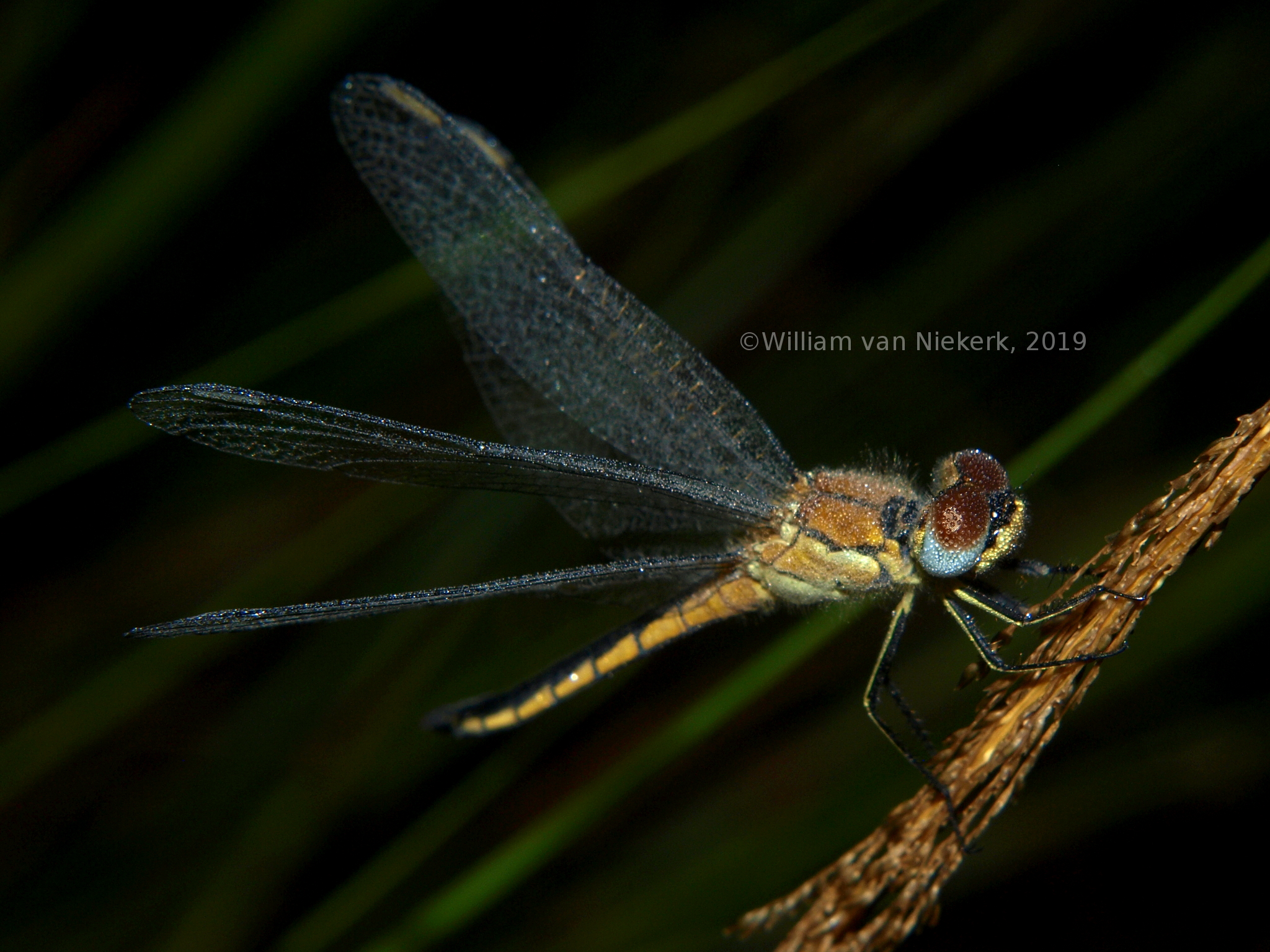
- Aethiothemis solitaria (Pearly Flasher) – Widespread. Most commonly seen in grassy areas around oxbows and dambos. Mature males are easily mistaken for Orthetrum.
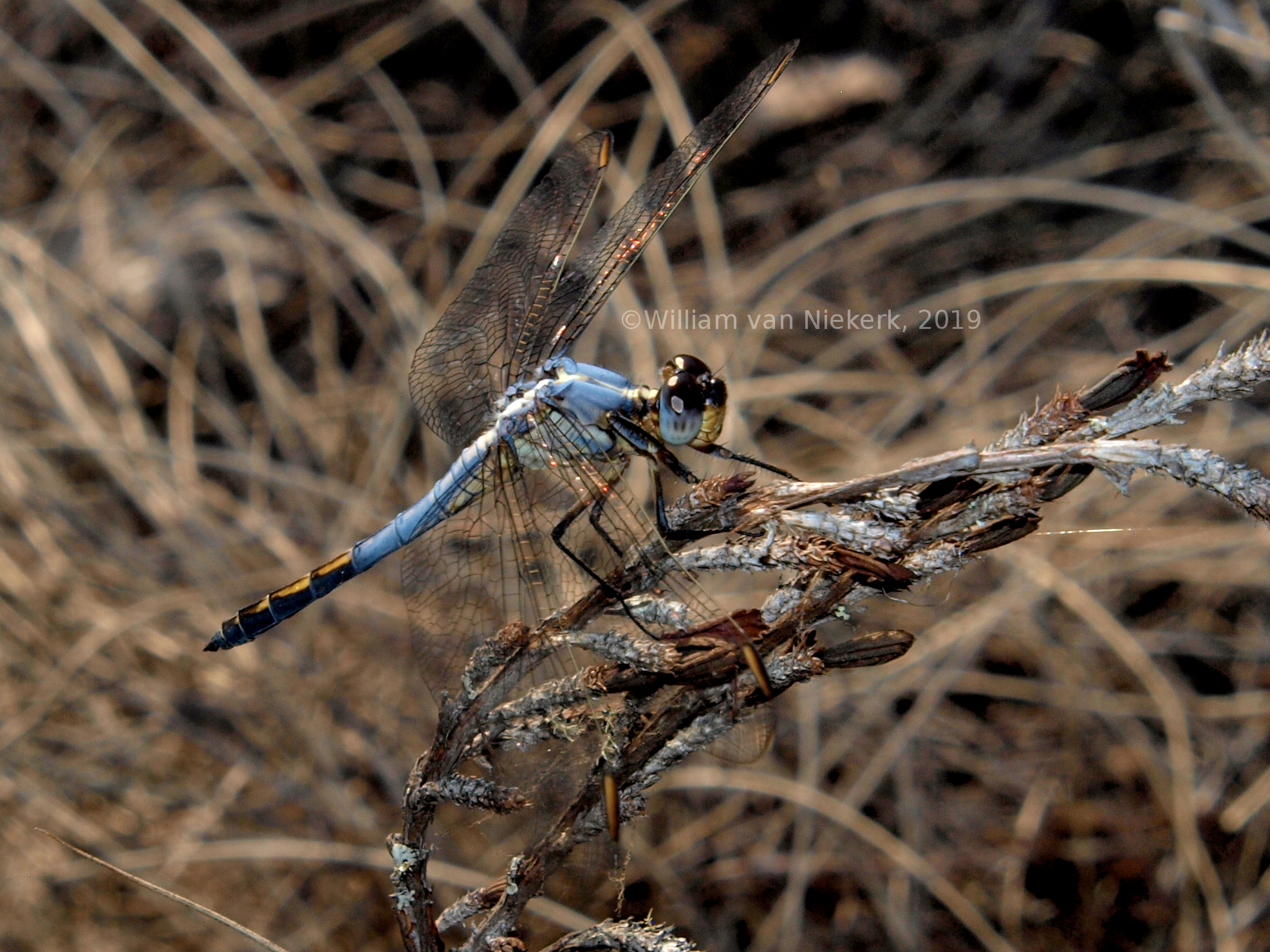
- Nesciothemis farinosa (Eastern Blacktail) – Widespread, often common around the rivers at Mutinondo, sometimes well into the woodland. Likely breeds in calmer pools.
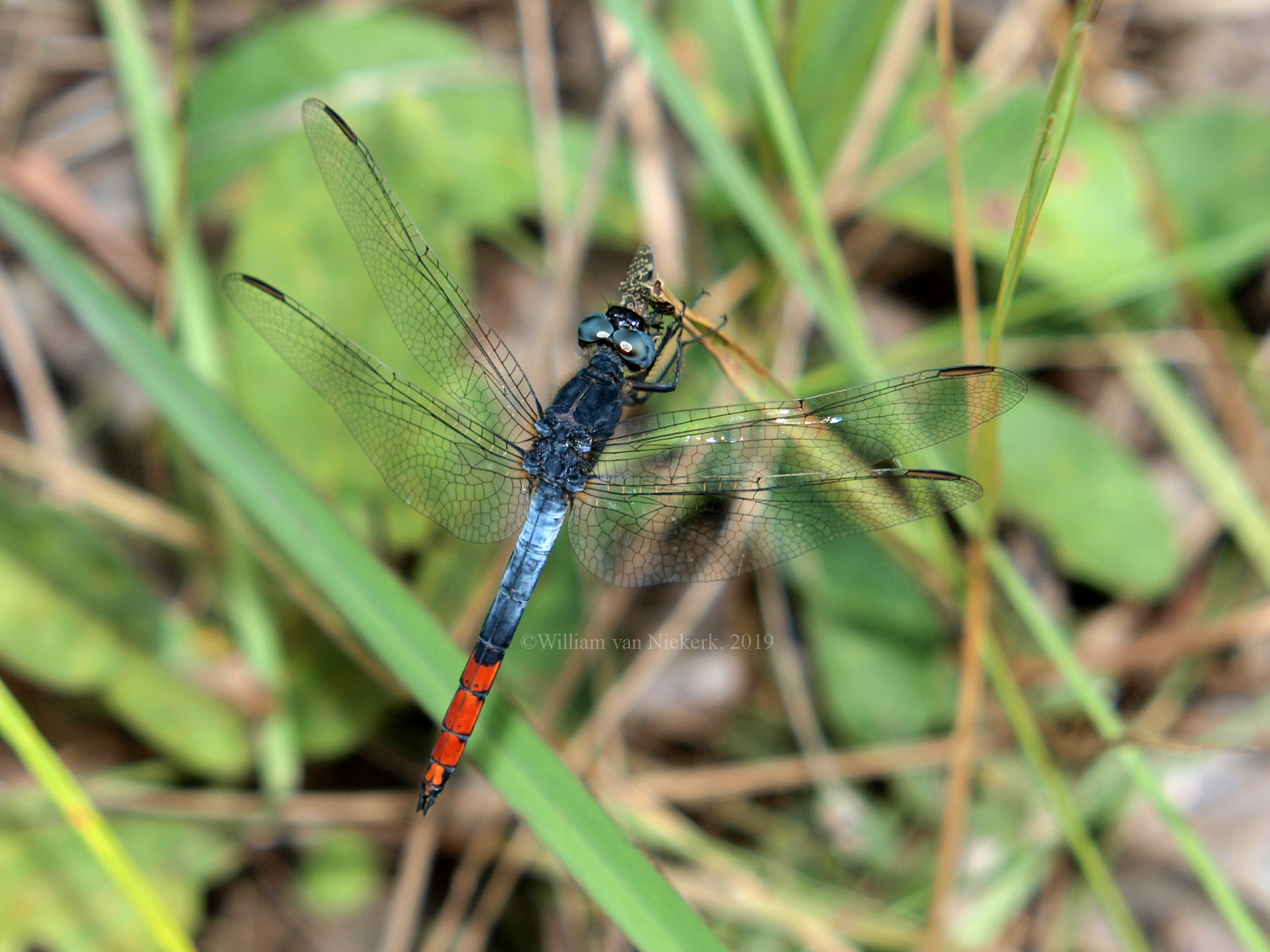
- Nesciothemis fitzgeraldi (Lesser Peppertail) - much less common than Nesciothemis farinosa; occasional in open, grassy areas of woodland.
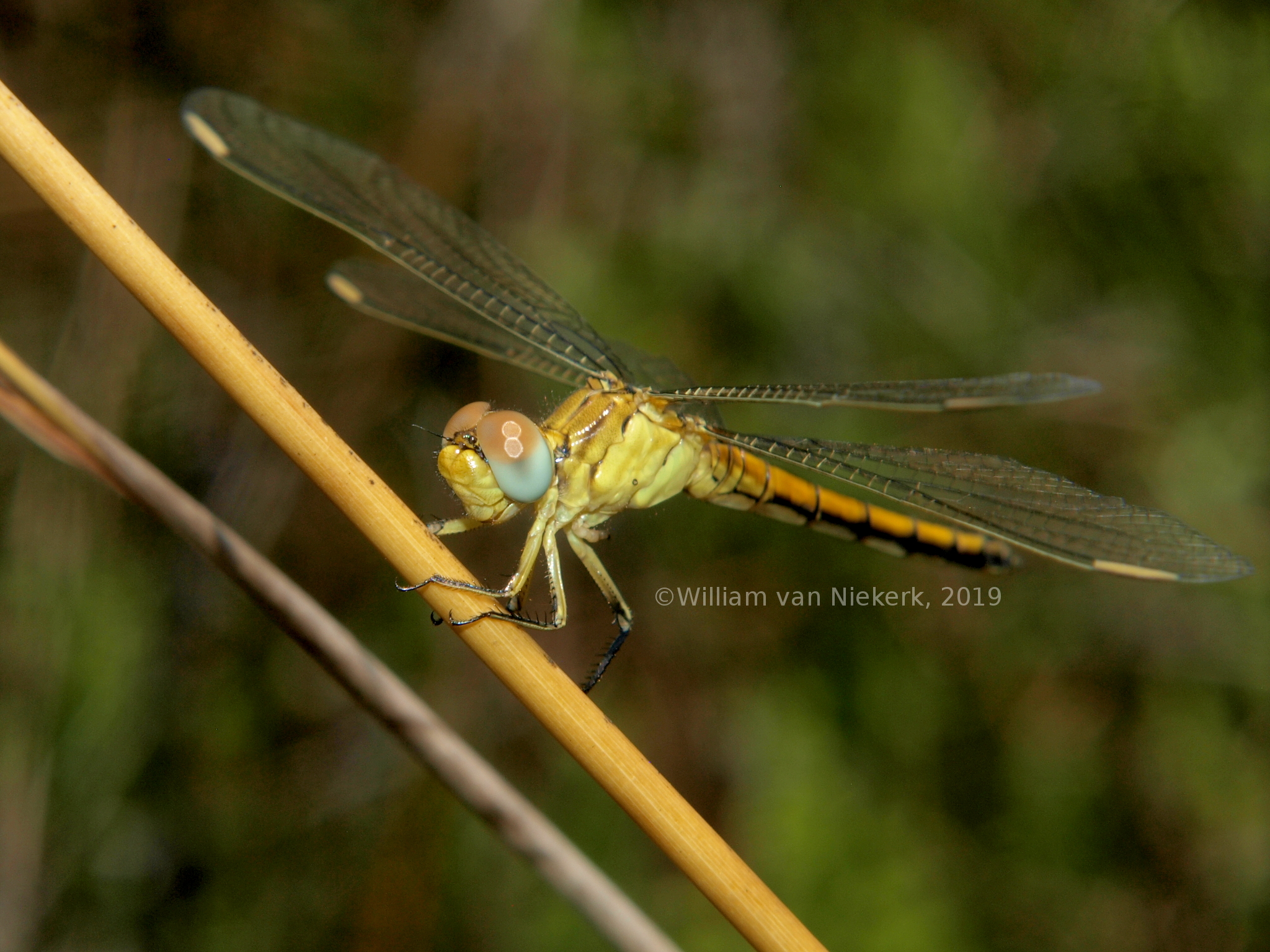
- Orthetrum abbotti (Little Skimmer) – Widespread, at Mutinondo generally uncommon outside of dambo grasslands.
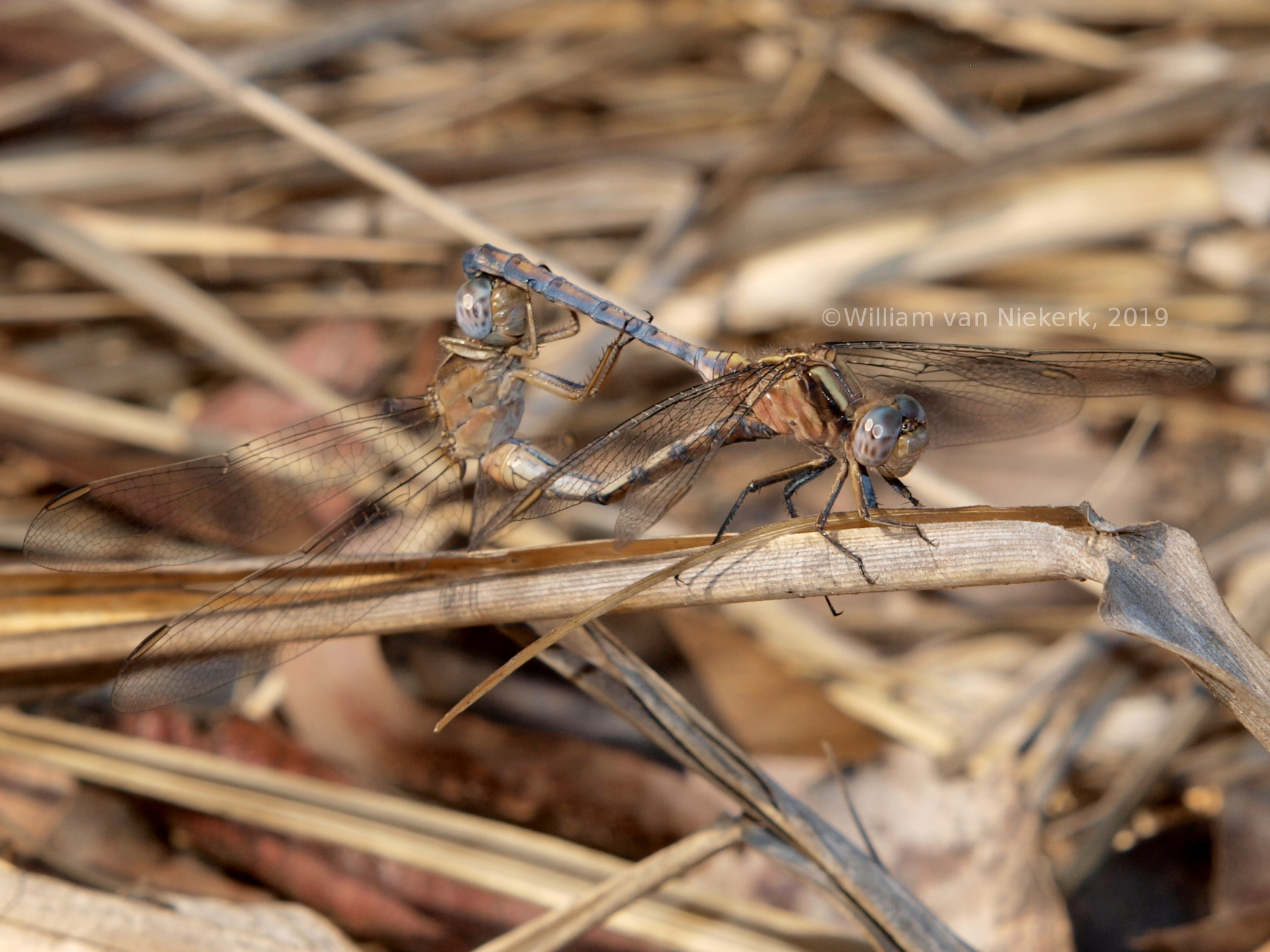
- Orthetrum angustiventre (Many-Celled Skimmer) – Widespread, but sparsely recorded; at Mutinondo seasonally abundant in woodland, particularly that surrounding Peter’s and Kabasano dambos.
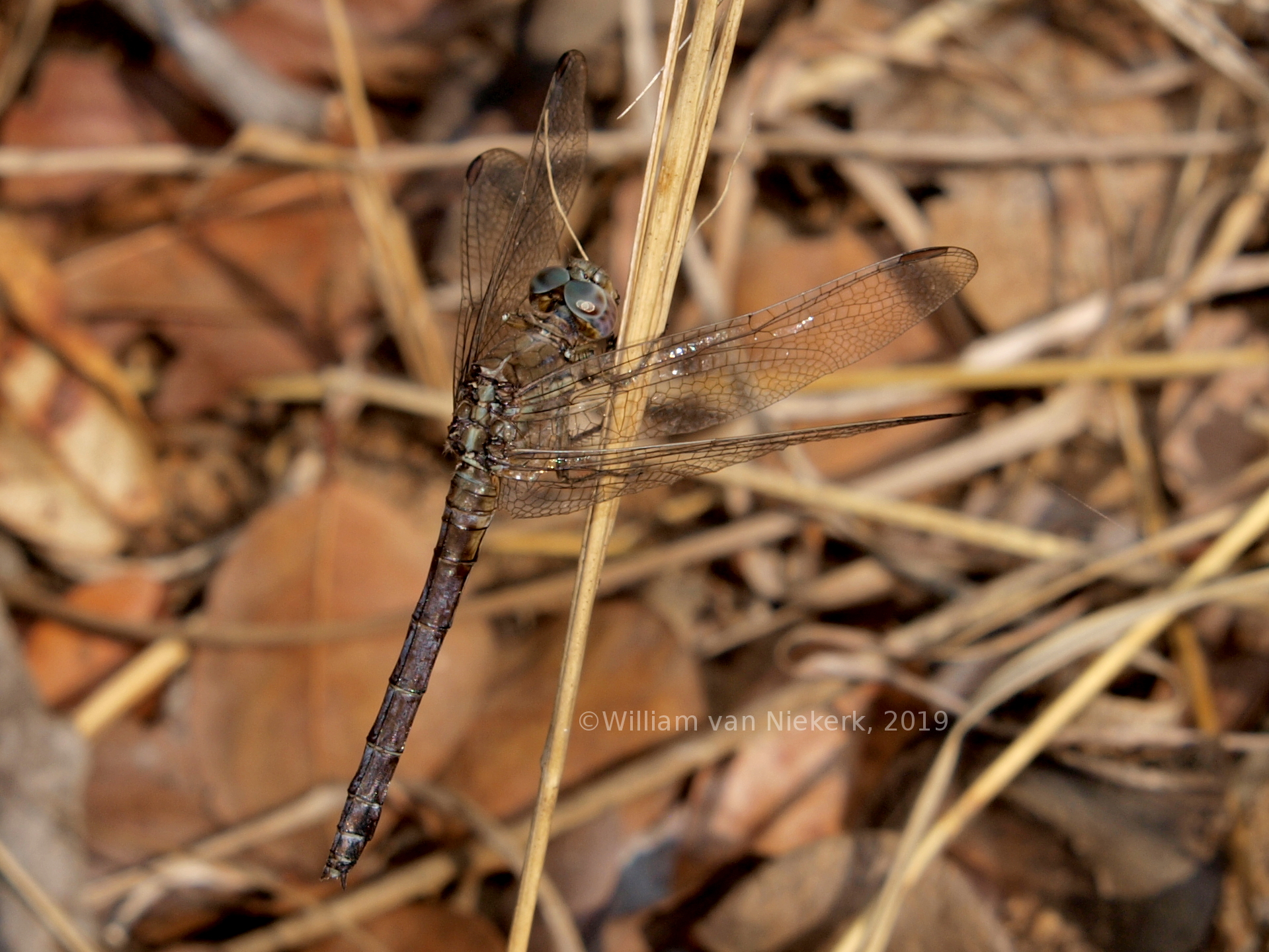
- Orthetrum chrysostigma (Epaulet Skimmer) – Very widespread. Seemingly relatively uncommon at Mutinondo; recorded in woodland but likely breeding in smaller streams or calm, shallow areas of the rivers .
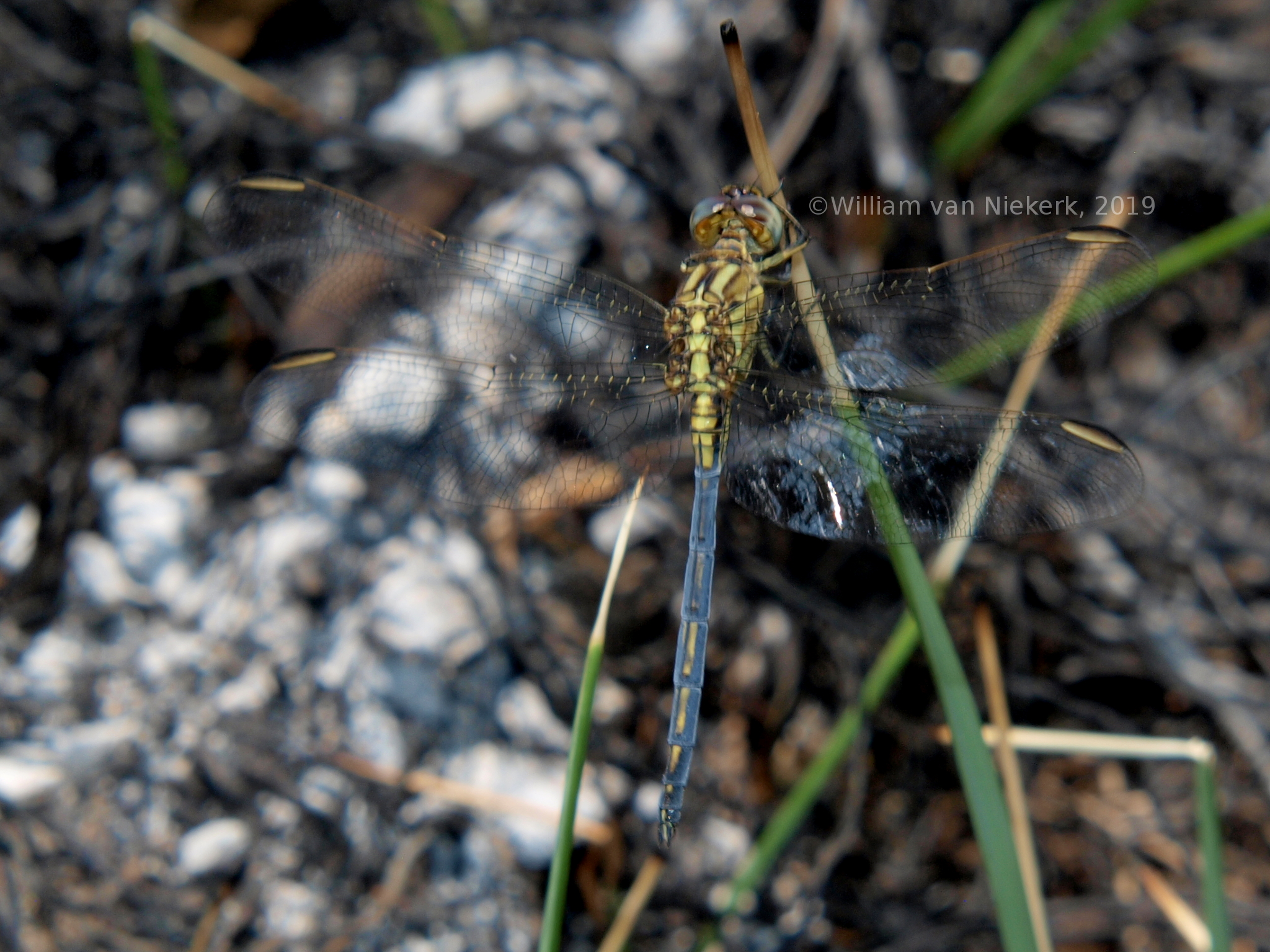
- Orthetrum machadoi (Highland Skimmer) – Widespread, ubiquitous in much of Zambia. At Mutinondo, generally uncommon; recorded coming to late dry-season pools in smaller dambos.
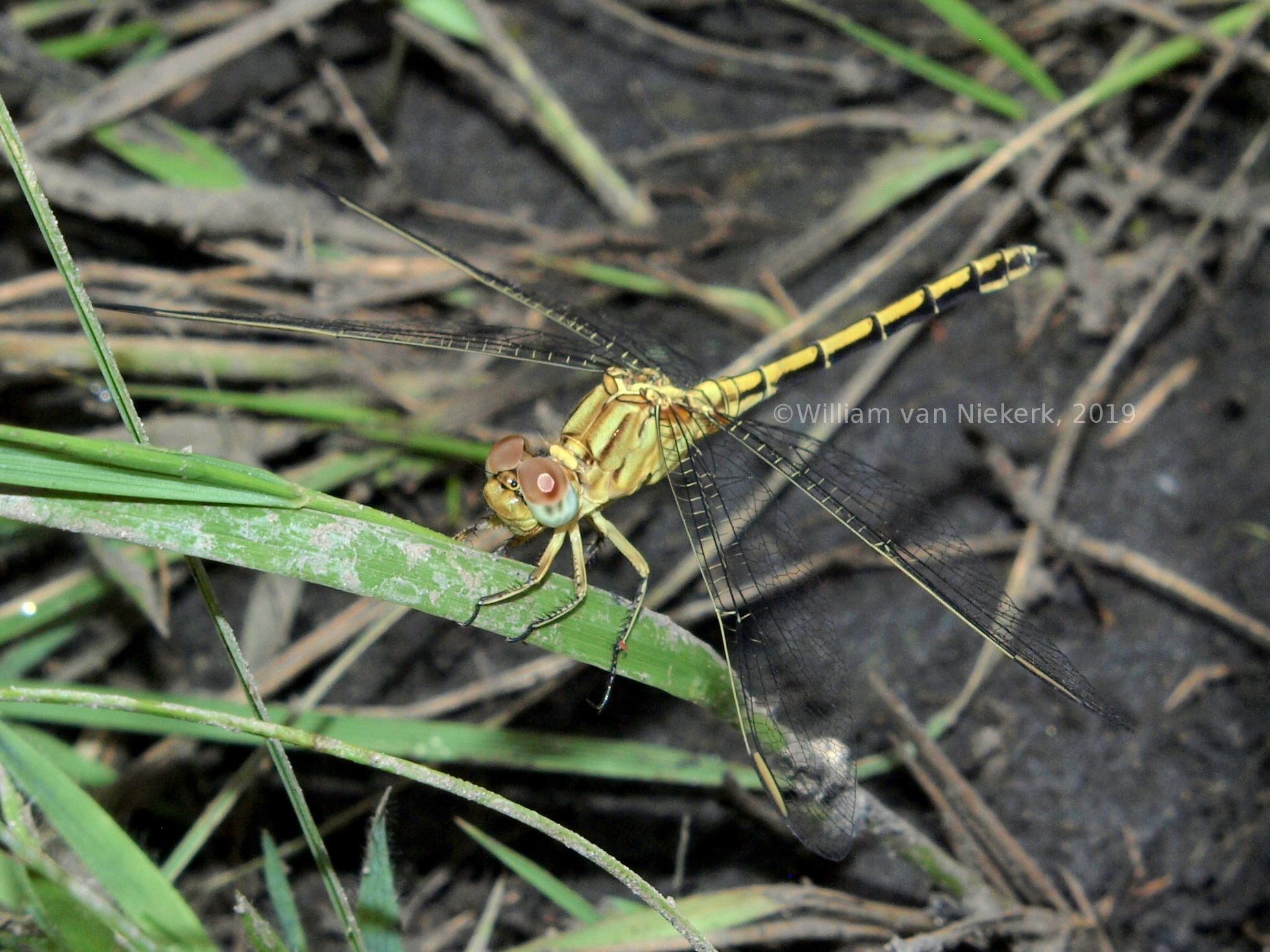
- Orthetrum macrostigma (Sharkfin Skimmer) – Distributed throughout Miombo belt. At Mutinondo, only recorded so far close to dense, riparian thicket. .
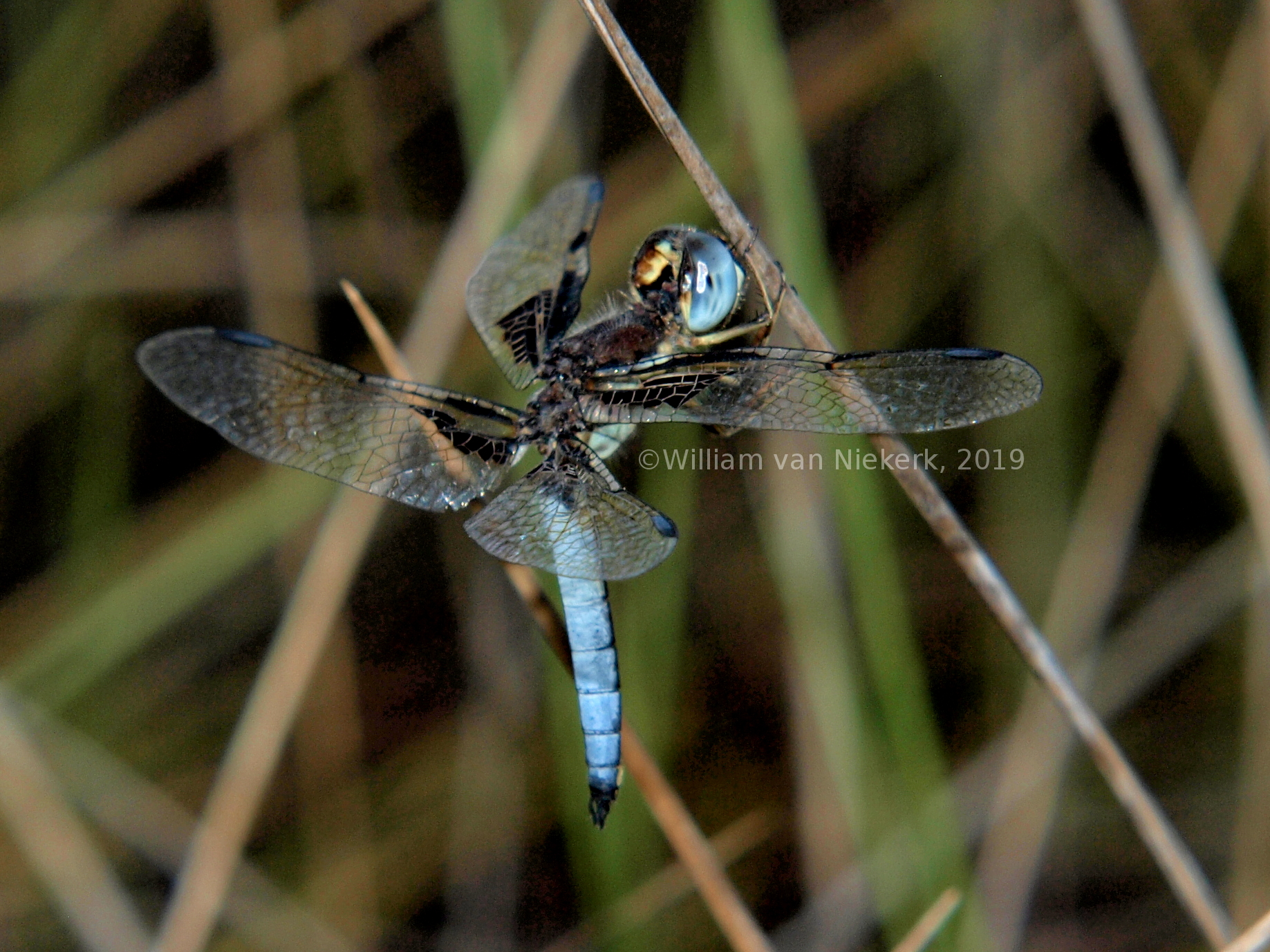
- Palpopleura jucunda (Yellow-Veined Widow) – Widespread, easily overlooked but fairly common. At Mutinondo, most commonly in seepage areas; entering small dambos during the dry season but favouring seepage grasslands on granite pavement during the rains.
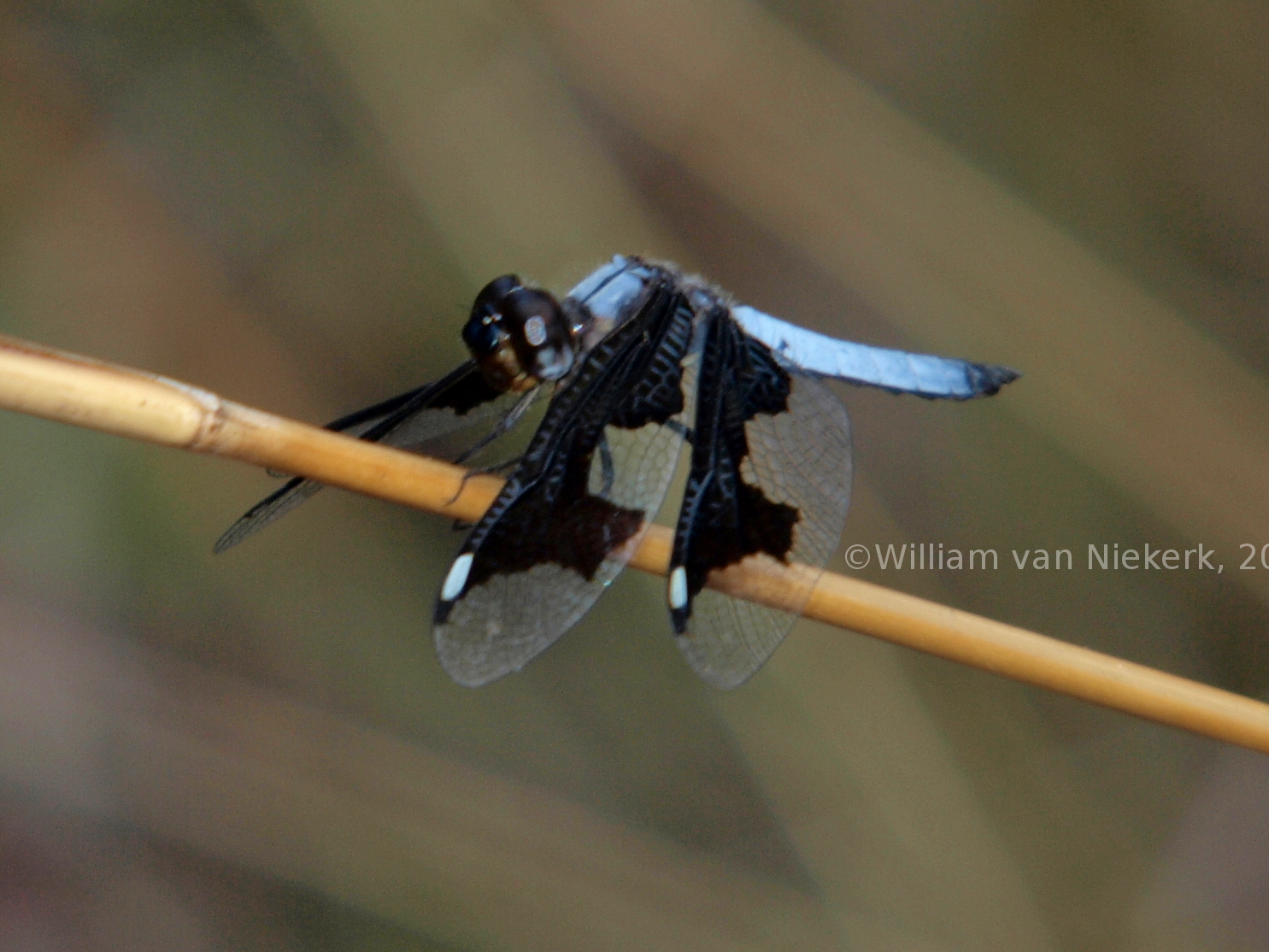
- Palpopleura portia (Portia Widow) – Widespread and common; at Mutinondo usually along river edge; probably replaced in dambo by the similar Palpopleura lucia
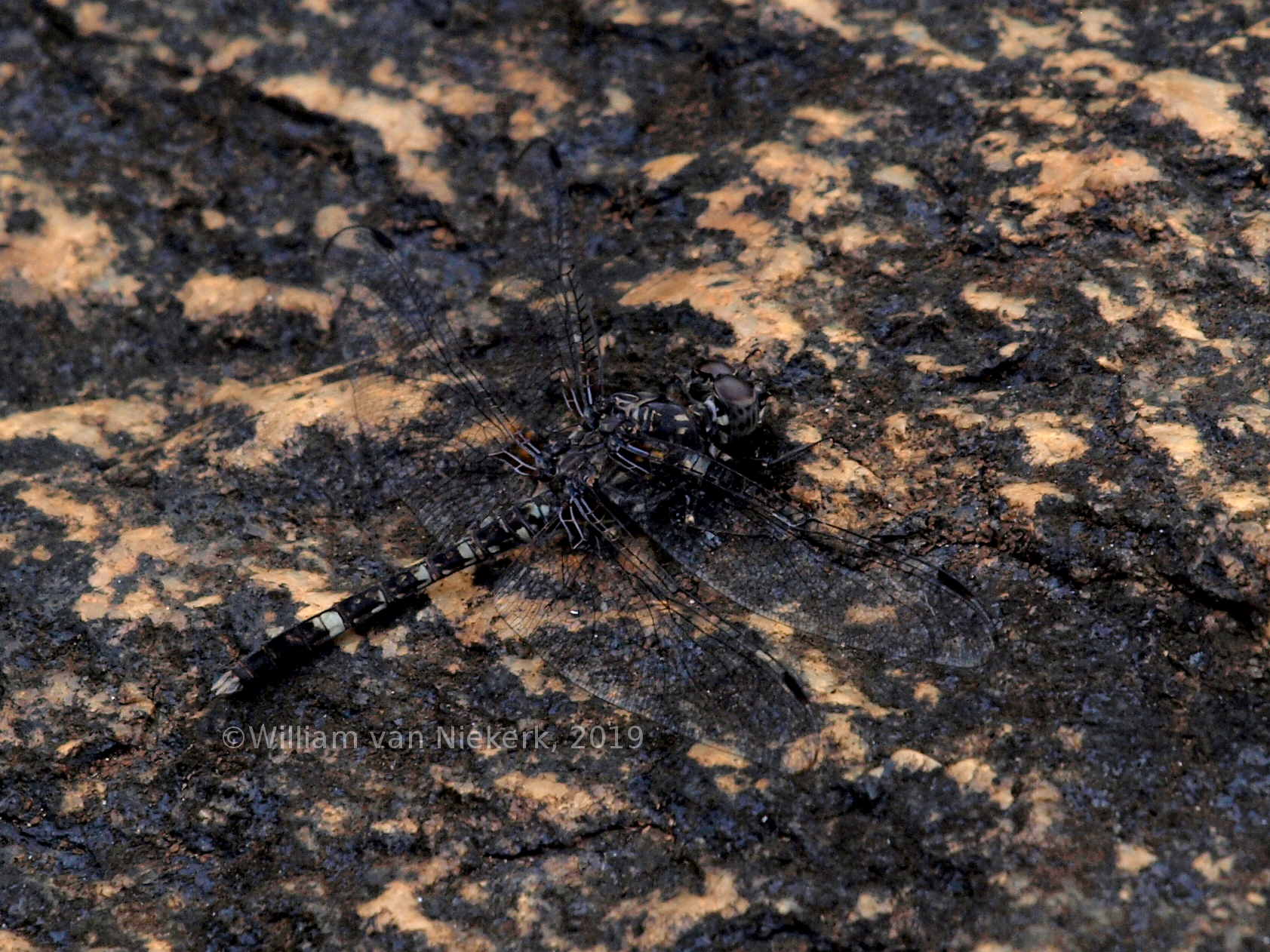
- Bradinopyga cornuta (Horned Rockdweller) – Widespread in Southern and Eastern Africa. Present in low numbers around rockpools; well camouflaged and easily overlooked.
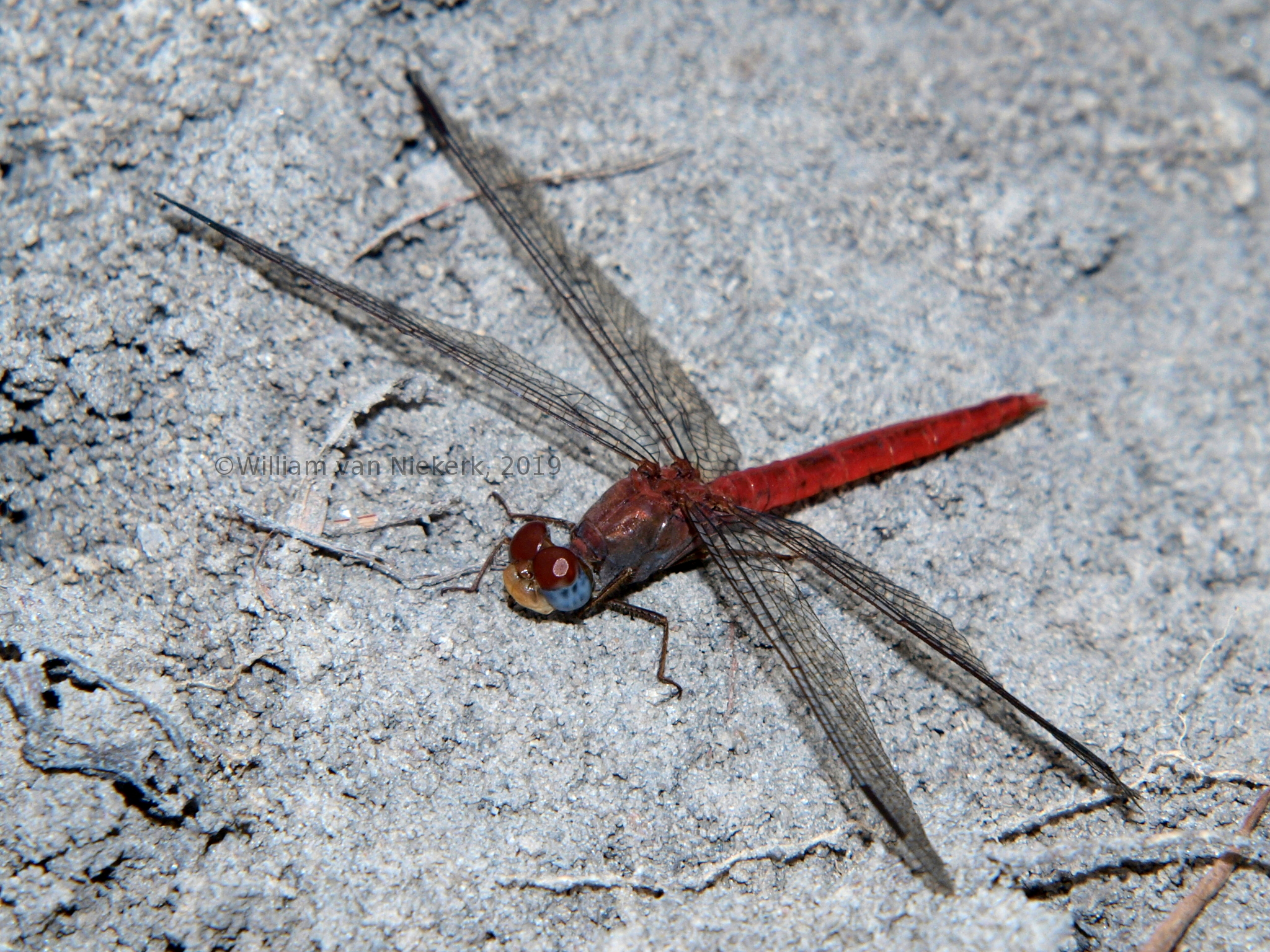
- Crocothemis divisa (Rock Scarlet) – Widespread; reasonably common. Commonly seen in well-drained, often rocky areas, often some distance from permanent water; presumably breeds in shallow streams .
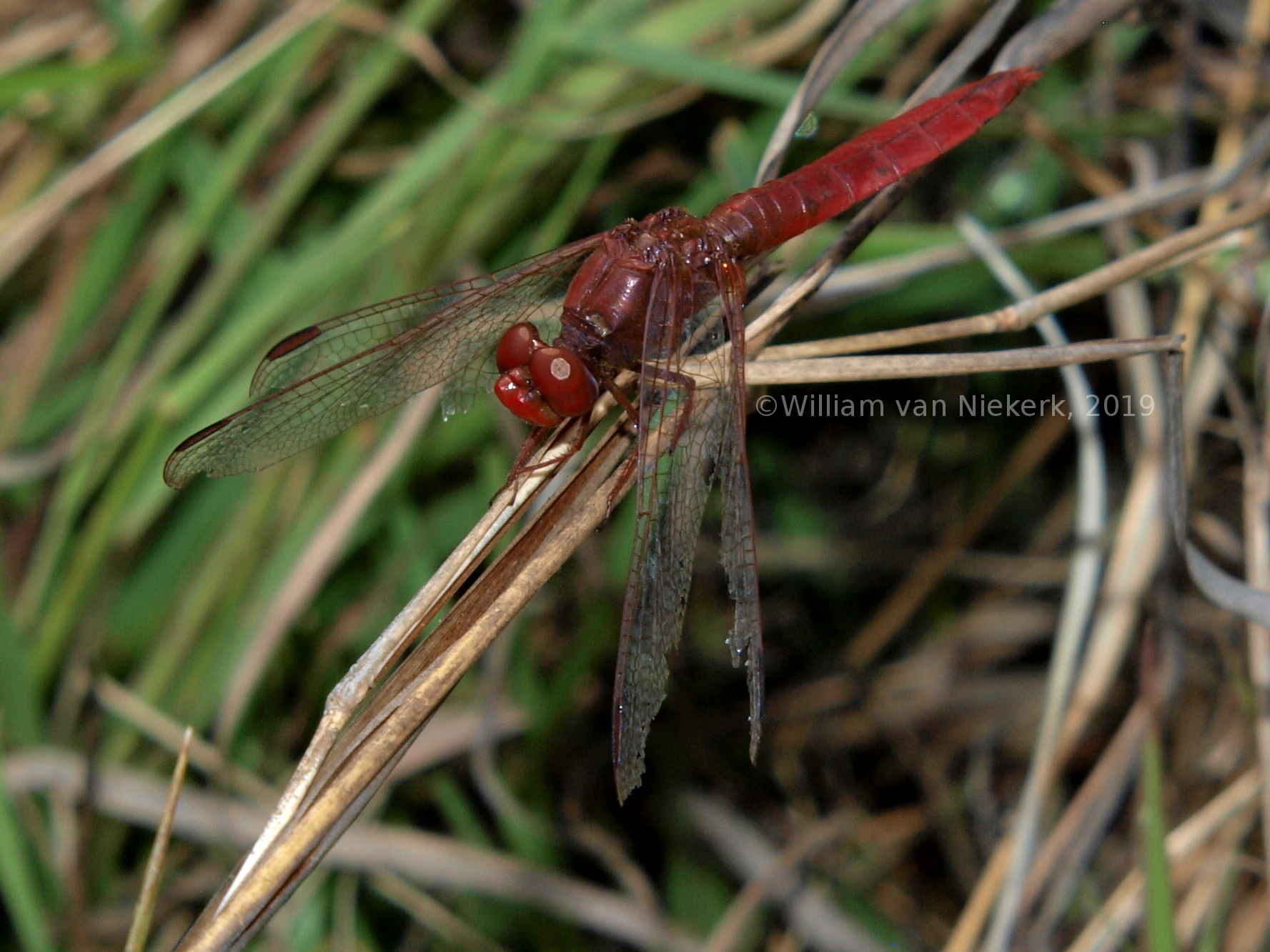
- Crocothemis erythraea (Broad Scarlet) – Pan-African, ubiquitous in most areas. At Mutinondo, commonly seen in dambo grasslands.
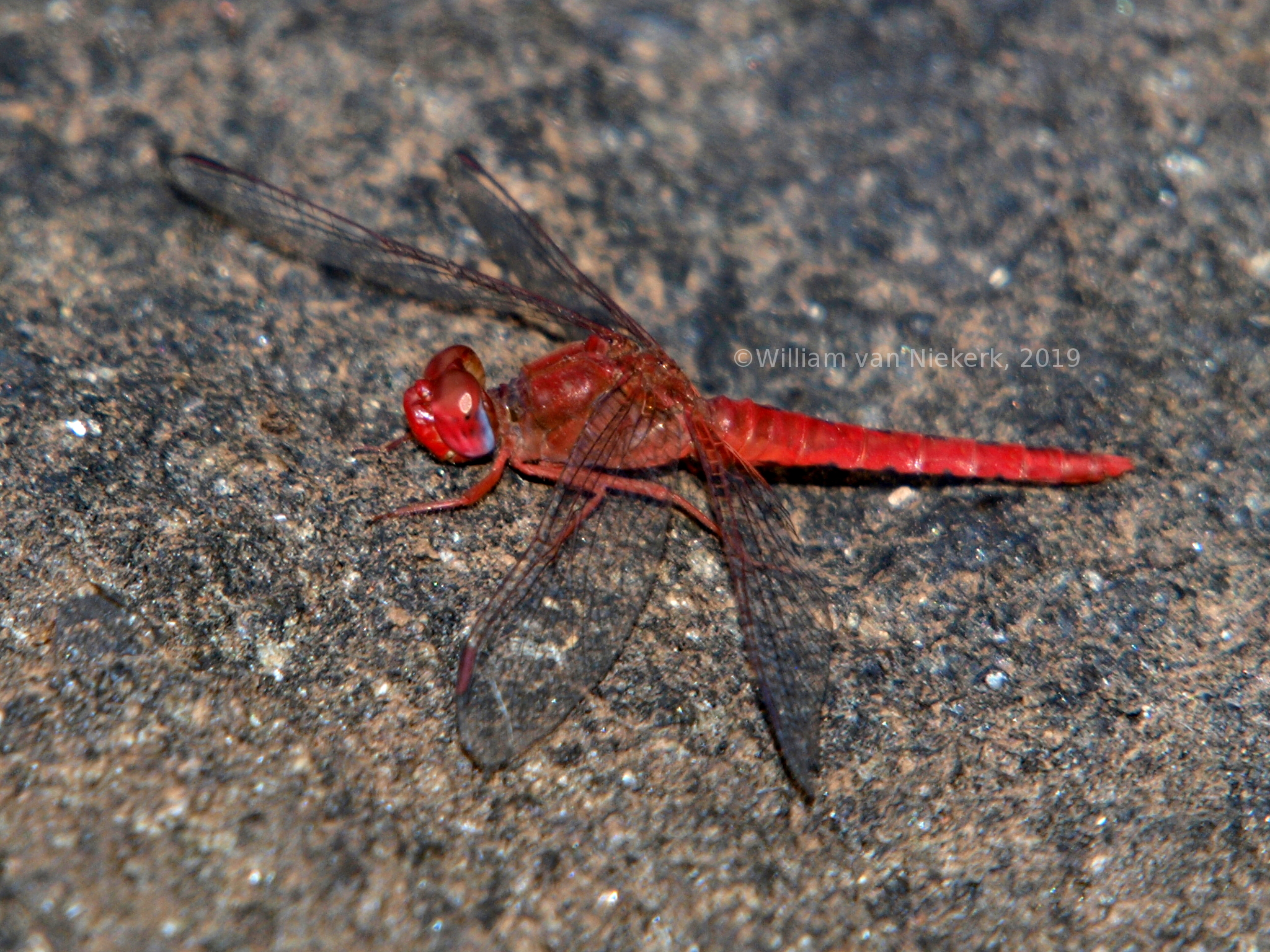
- Crocothemis sanguinolenta (Little Scarlet) – Widespread, common throughout sub-Saharan Africa. At Mutinondo, is most readily found in rocky, fast-flowing areas of the major rivers, especially around waterfalls and rapids.
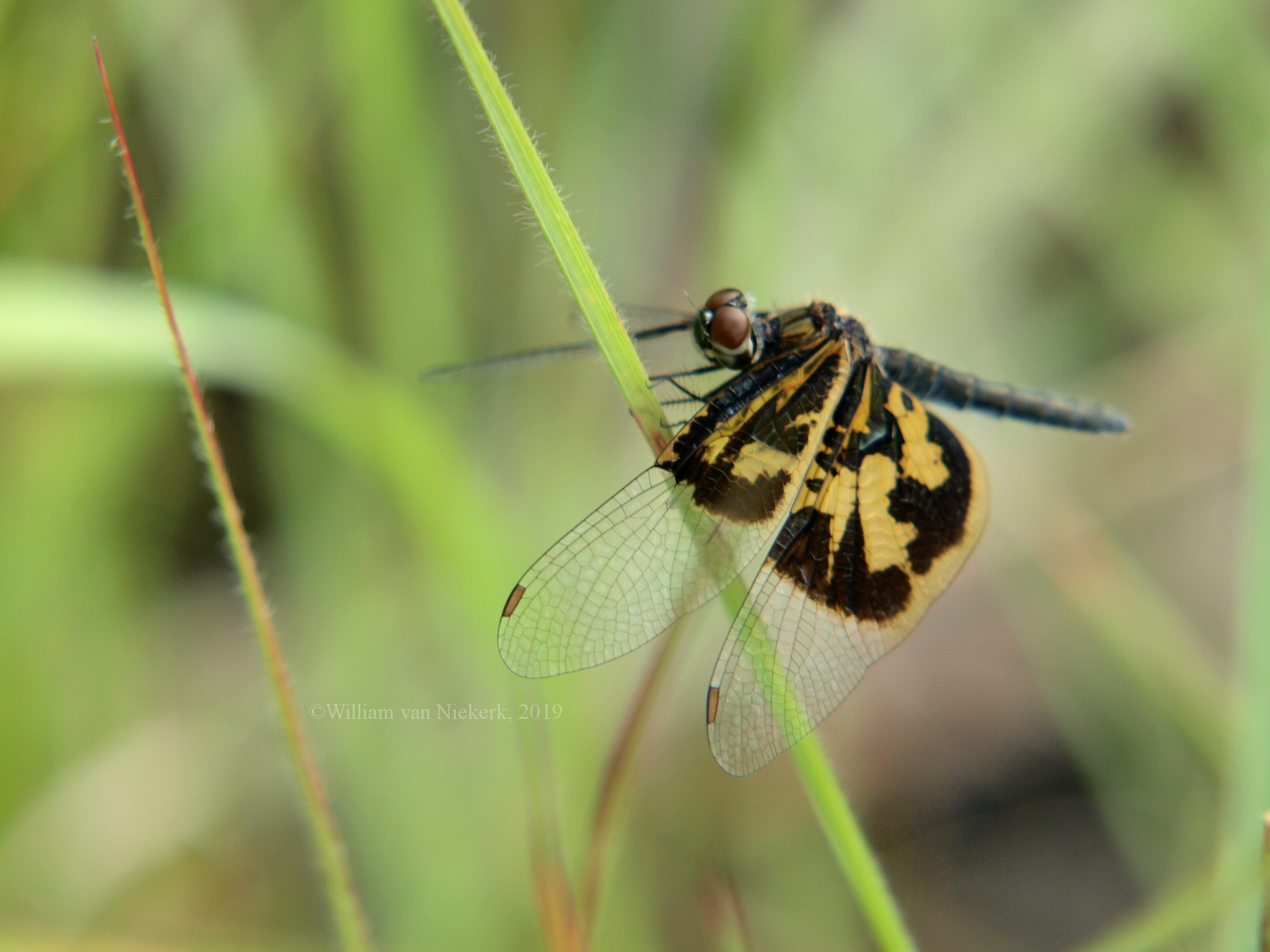
- Rhyothemis mariposa (Mariposa flutterer) – Distributed through Zambia, Angola and southern DRC, this colourful dragonfly appears to favour open, near-dambo grasslands at Mutinondo Wilderness.
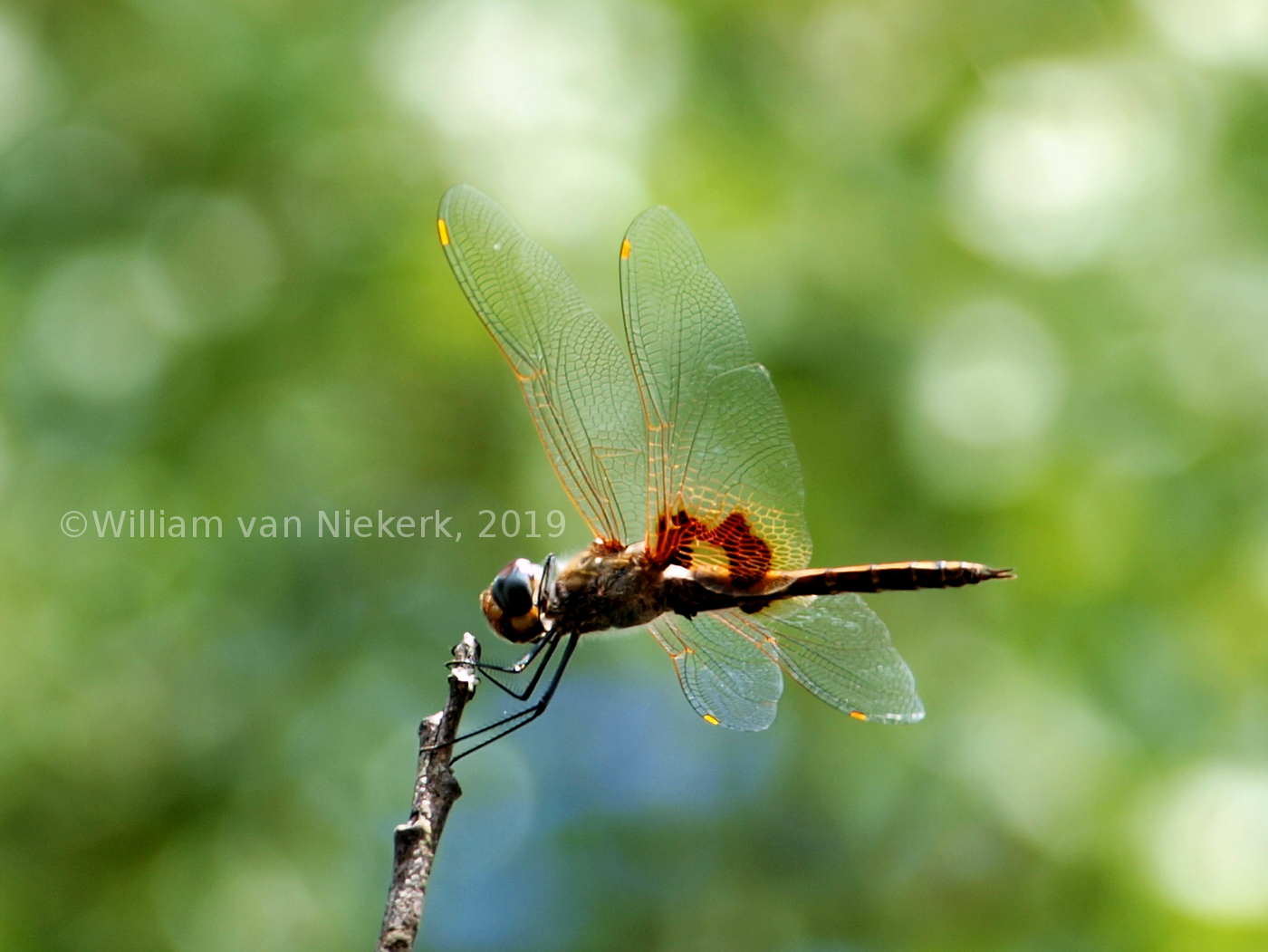
- Tramea basilaris (Keyhole Glider) – Widespread, high-flying, so easily overlooked, but probably common through much of sub-Saharan Africa. Usually seen settling in woodlands in Mutinondo, probably breeding in temporary pools and oxbows.
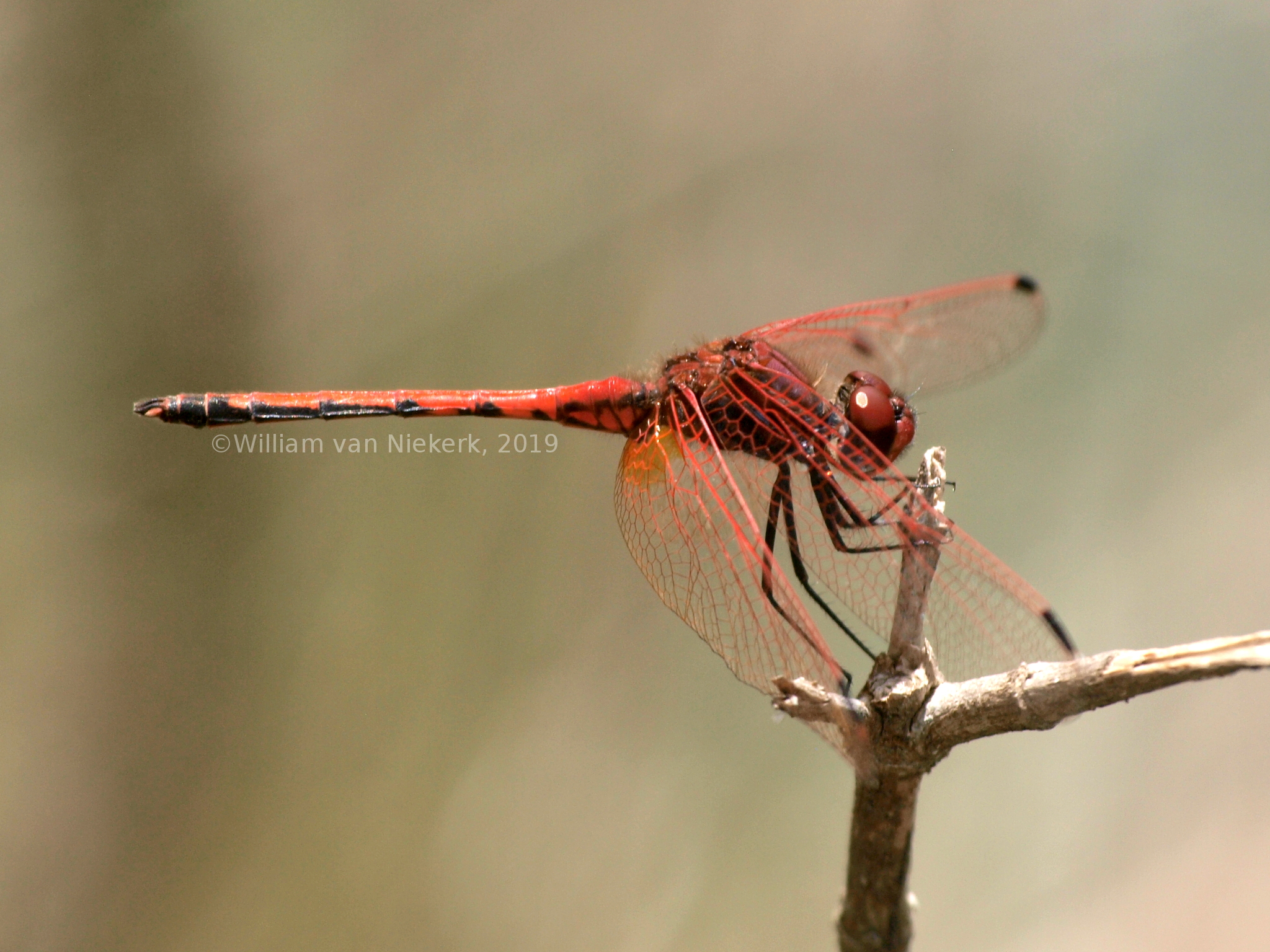
- Trithemis arteriosa (Red-Veined Dropwing) – Ubiquitous in most of Africa. Usually present at any slower-flowing permanent or semi-permanent water.
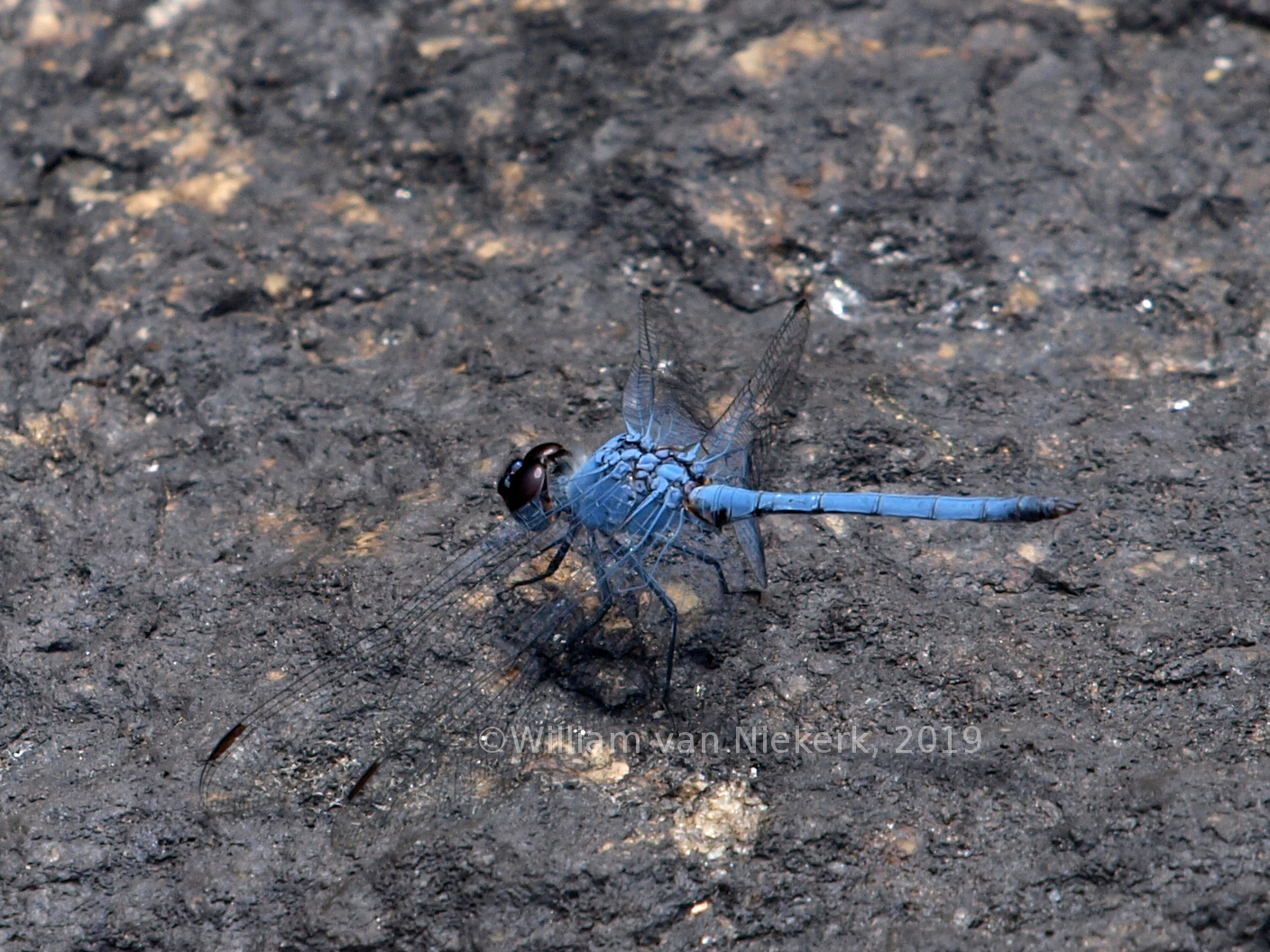
- Trithemis dorsalis (Highland Dropwing) – Widespread; one of several common dragonflies in most rocky areas of rivers at Mutinondo.
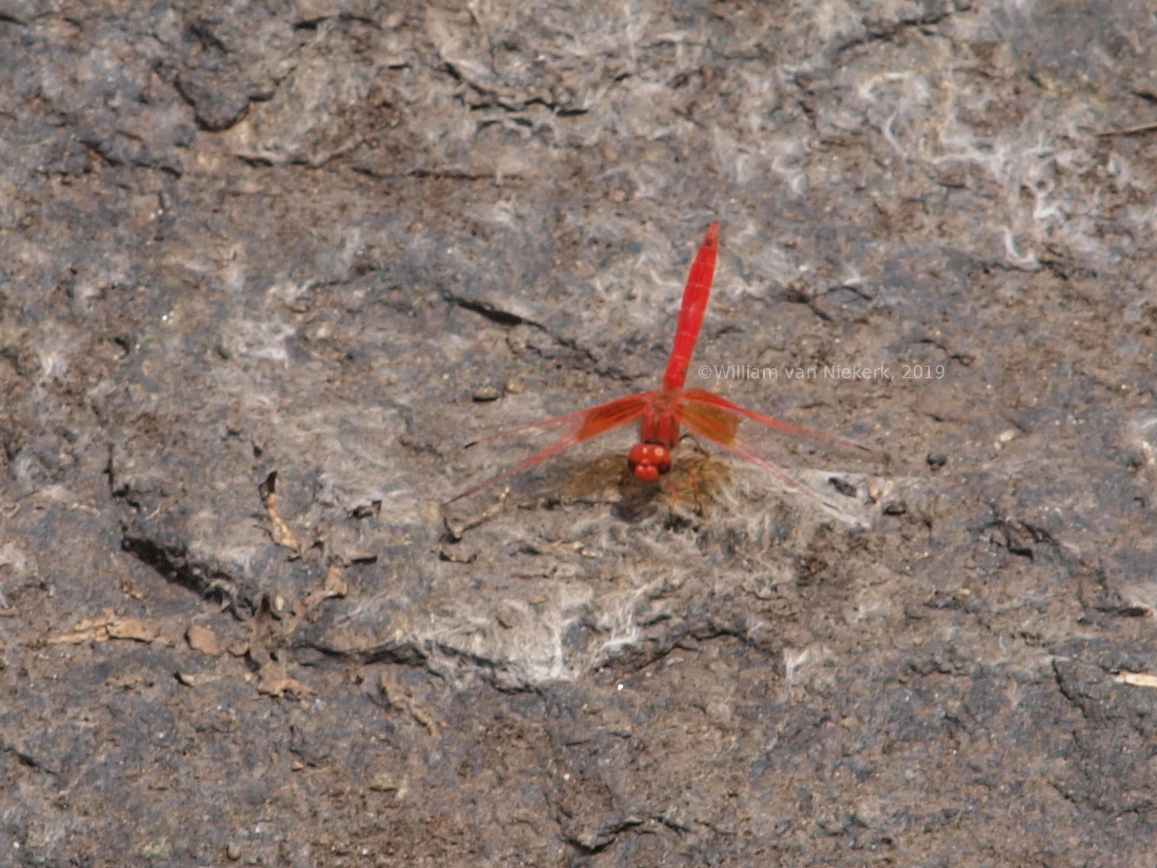
- Trithemis kirbyi (Orange-Winged Dropwing) – Widespread; probably the most adaptable dragonfly in much of Africa. Relatively uncommon at Mutinondo; usually along rivers, often close to rock-pools.
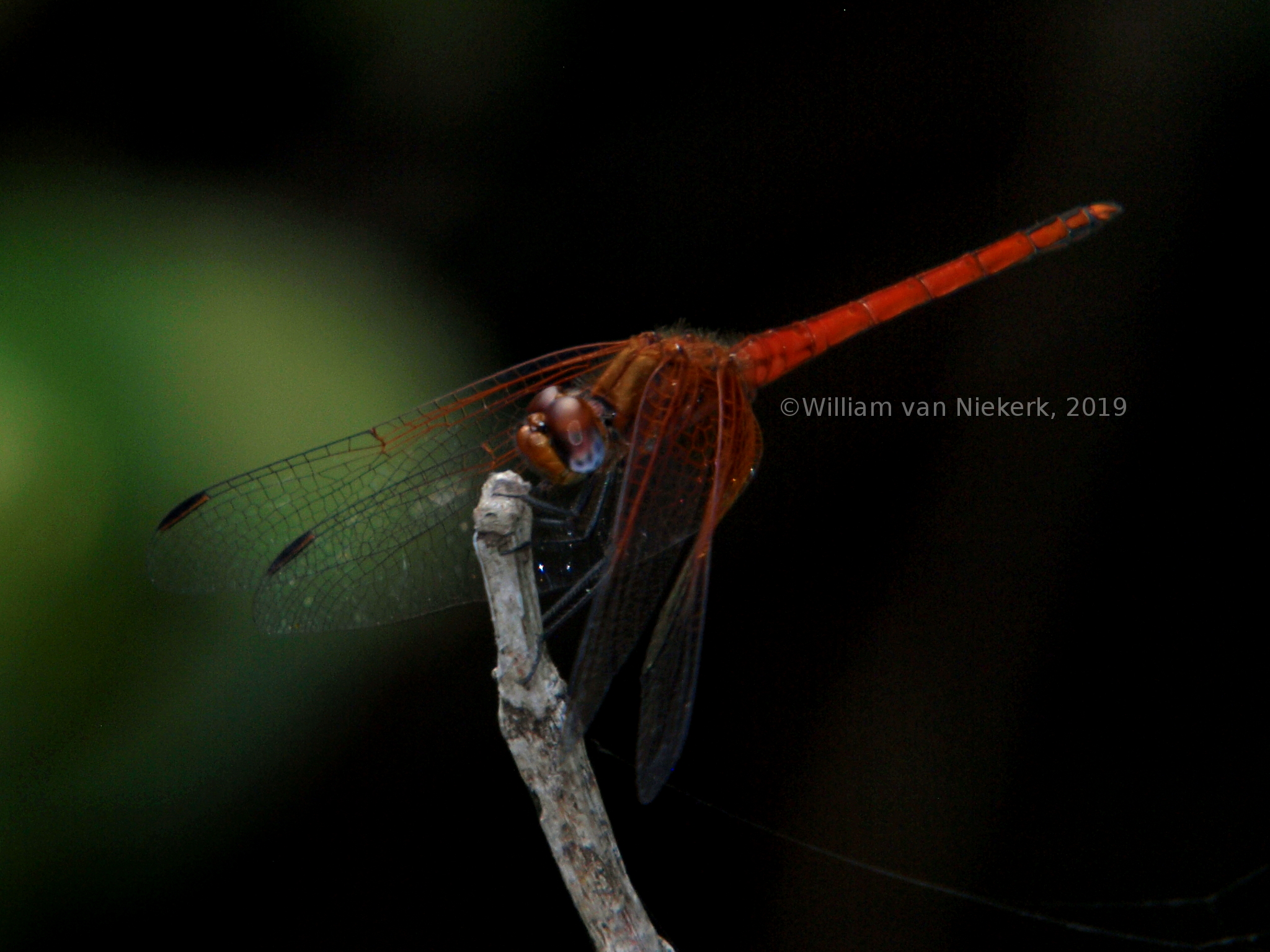
- Trithemis pluvialis (Russet Dropwing) – Widespread in Southern and Eastern Africa. Common along the two main rivers, especially in calmer stretches (e.g. above Choso), where they are easily mistaken for T. arteriosa.
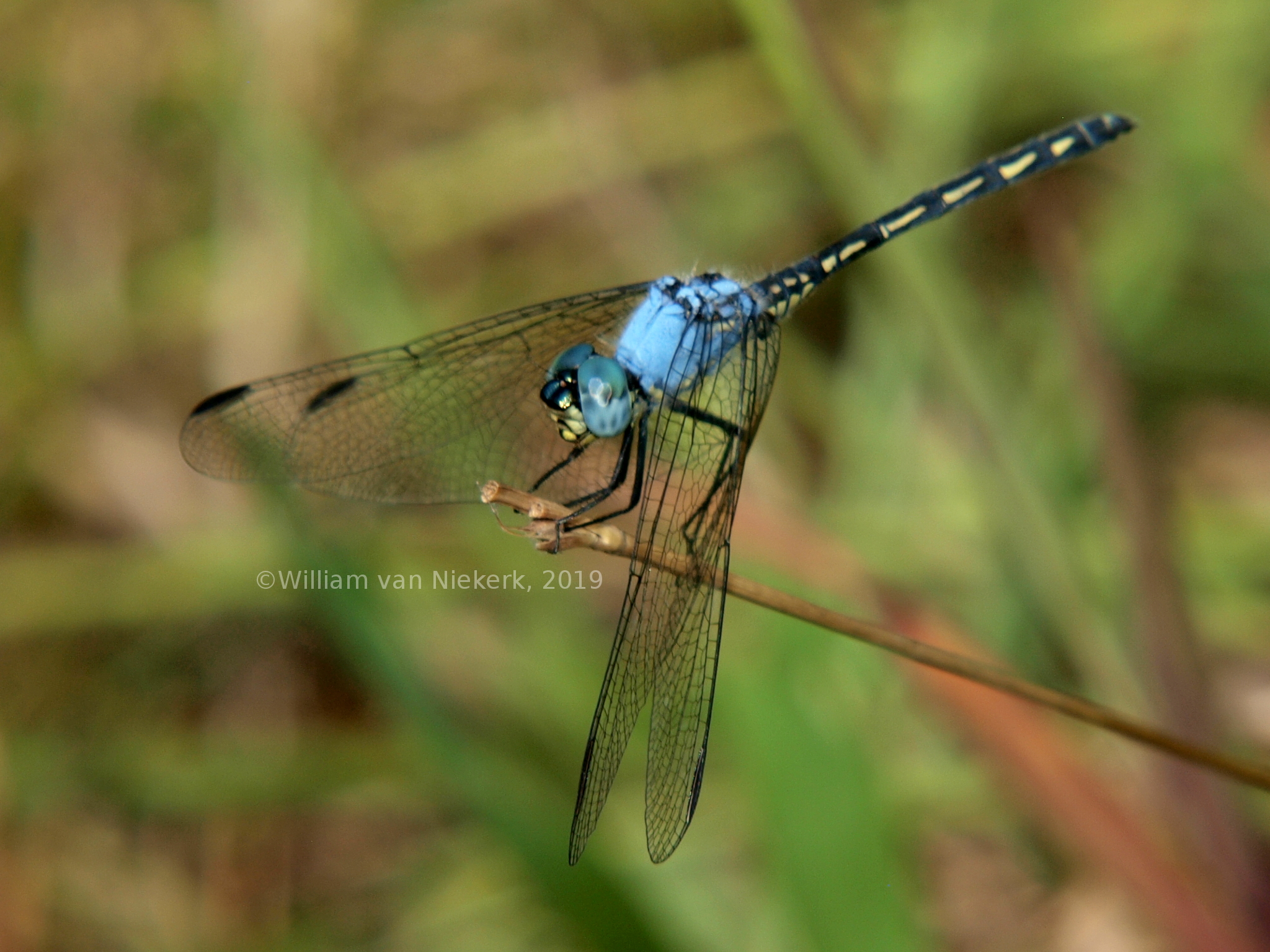
- Trithemis stictica (Jaunty Dropwing) – Widespread, but not usually common. At Mutinondo, only recorded among other Trithemis at Choso falls.
Narrow-Winged Damselflies – Family Coenagrionidae
Small to minute, typical damselflies, found in most environments, but rarely far from water.
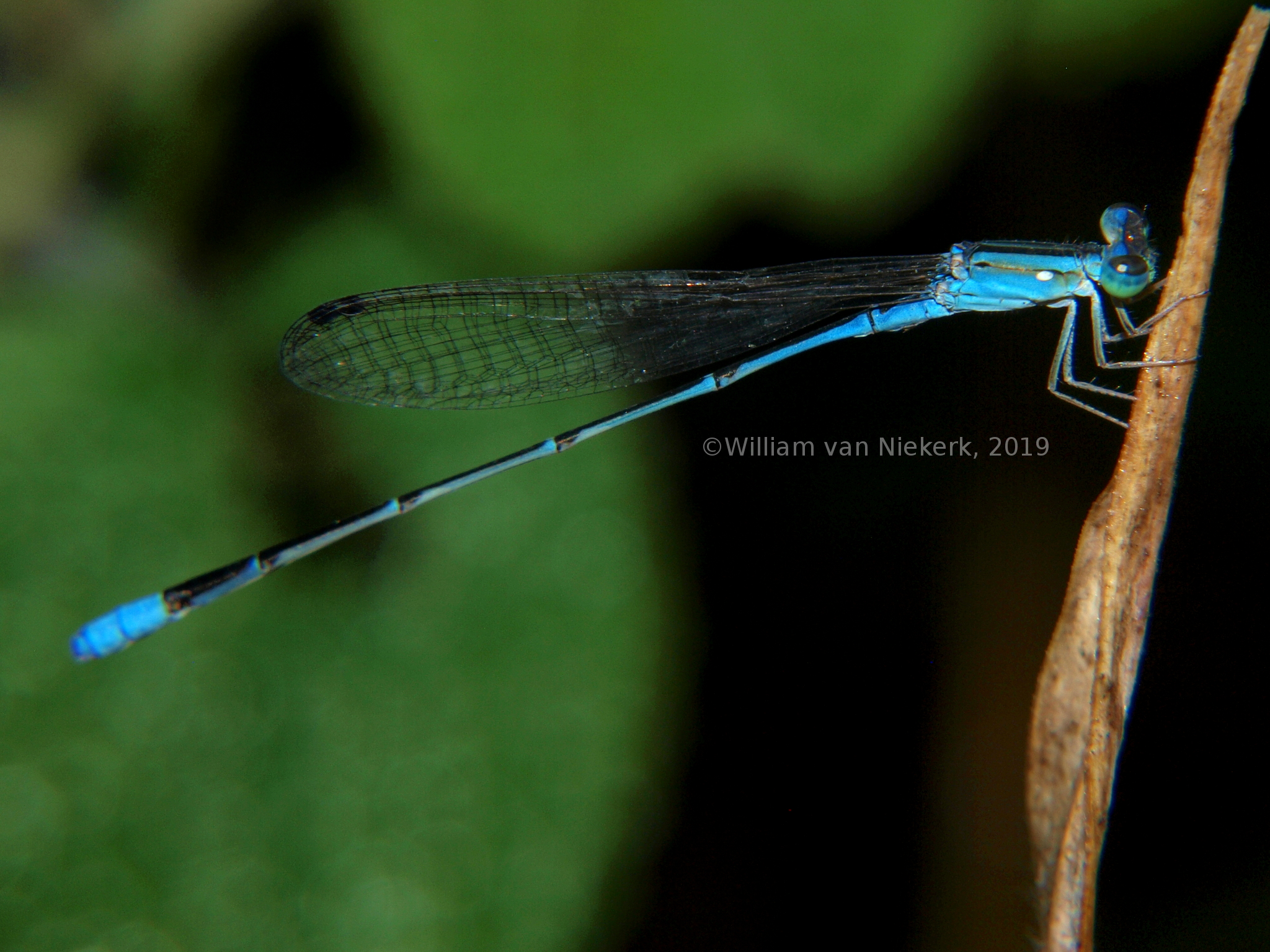
- Africallagma sinuatum (Peak Bluet) – Widespread in Southern and South-Tropical Africa. Common in dambos and mushitu throughout Mutinondo, occasionally seen well into woodland.
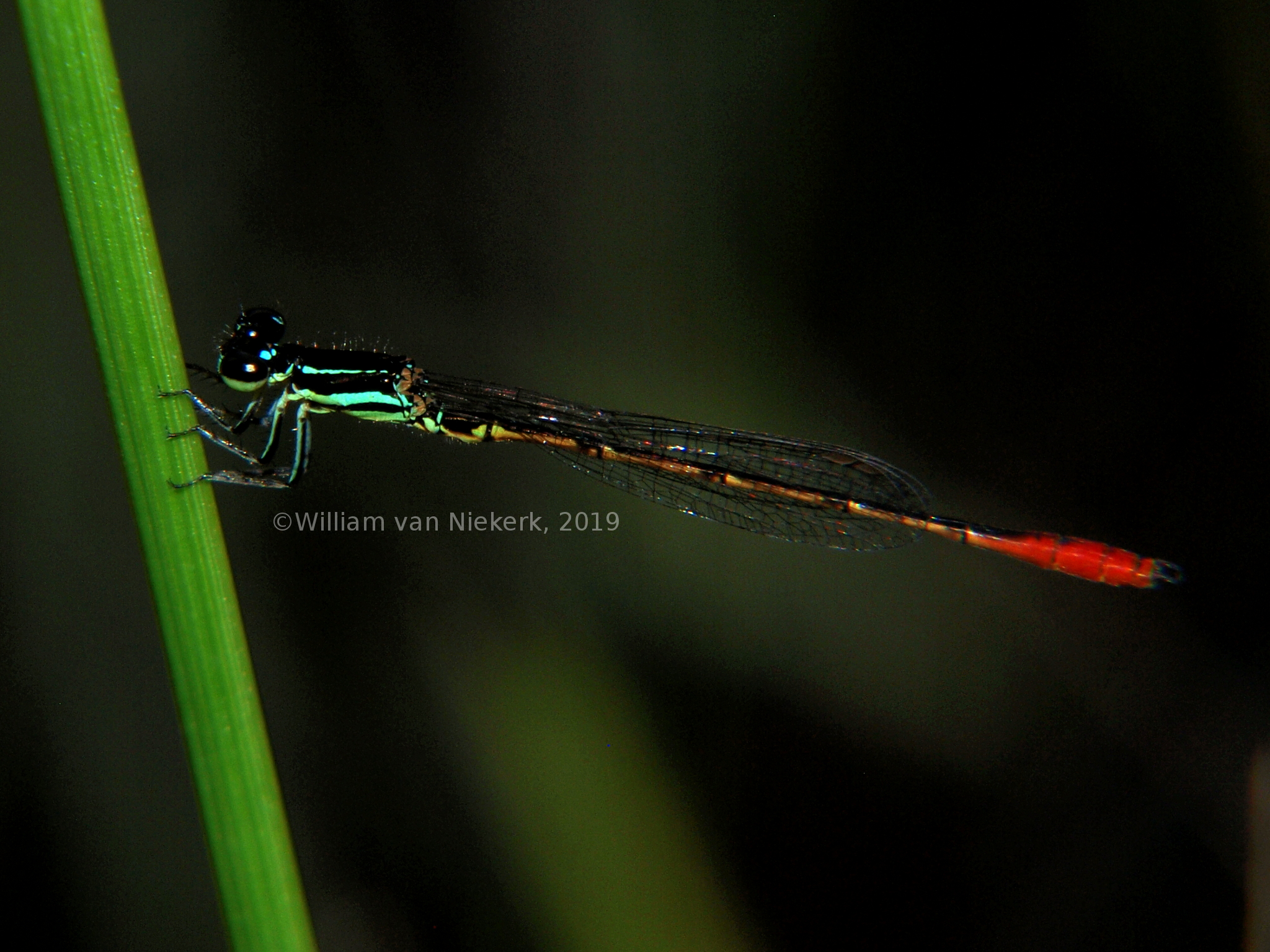
- Agriocnemis victoria (Lesser Pincer-Tailed Wisp) – Widespread but tiny and readily overlooked. Appears to favour marshy areas around rivers; probably into dambos, as well.
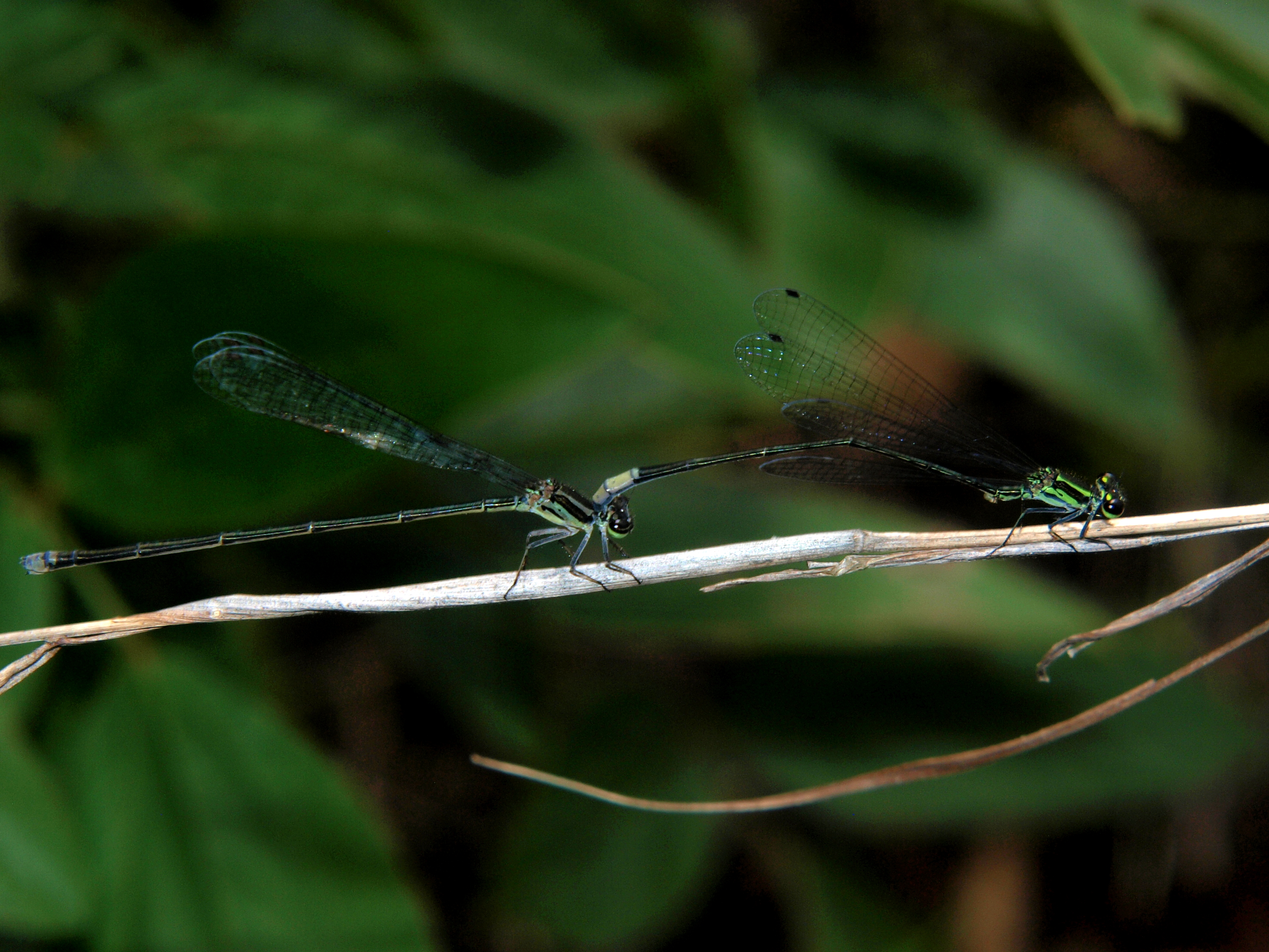
- Pseudagrion melanicterum (Black-and-Yellow Sprite) – Widespread, seems to be common at Mutinondo, especially in smaller, thickly wooded streams feeding the main rivers.
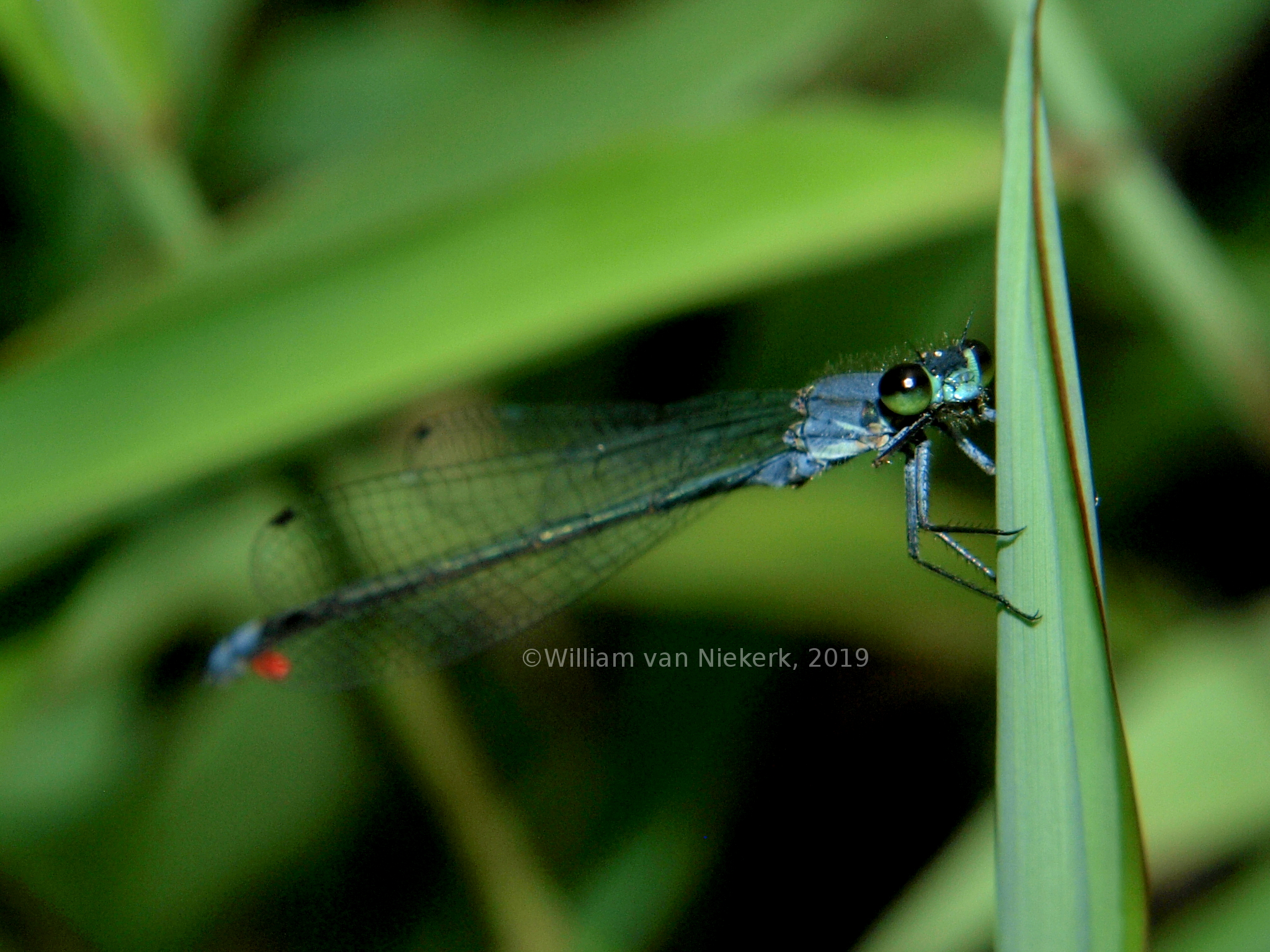
- Pseudagrion salisburyense (Slate Sprite) – Widespread. At Mutinondo, usually found along the larger rivers, especially areas with dense aquatic grasses and sedges.
White-Legged Damselflies – Family Platycnemididae
Generally small, dusty-blue (in male) damselflies, typically associated with larger streams and rivers.
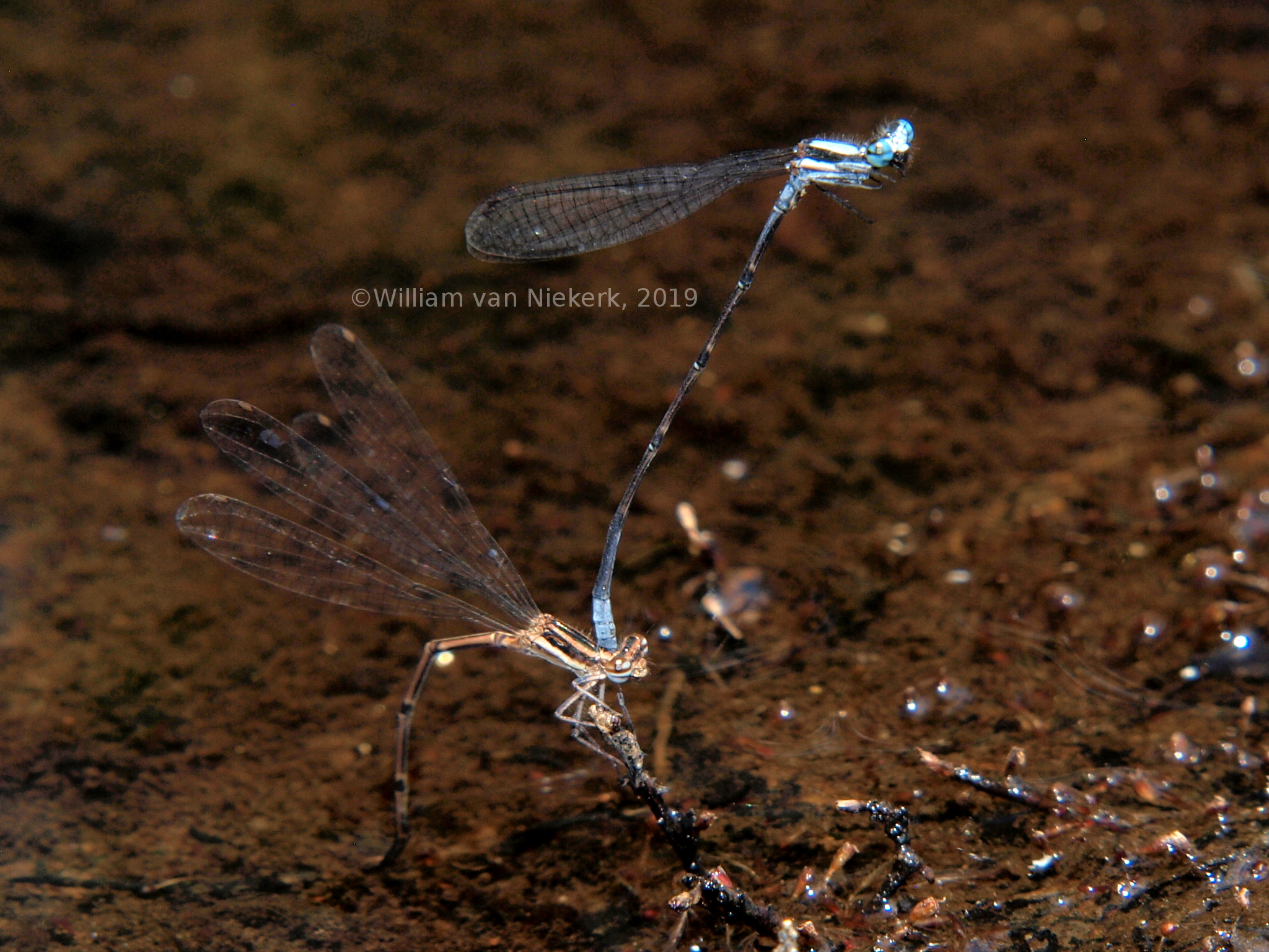
- Elattoneura glauca (Common Threadtail) – Widespread in sub-equatorial Africa. Common on most streams and rivers, usually in slower-flowing sections.
Spreadwing Damselflies – Family Lestidae
Medium-sized, very slender-bodied damselflies, adults less strongly associated with water than most damselflies. Often the most common damselflies during the dry season.
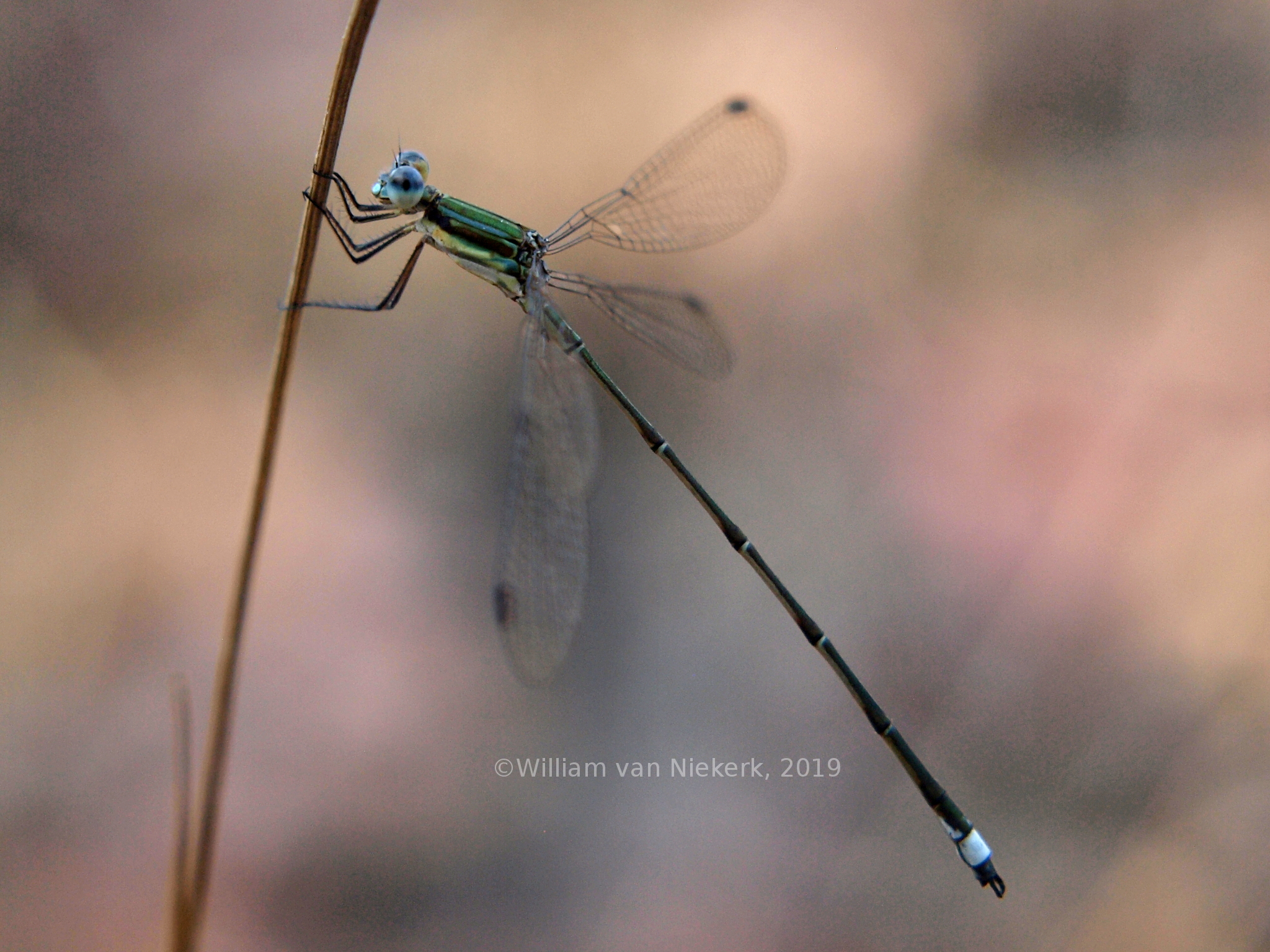
- Lestes virgatus (Smoky Spreadwing) – Widespread. Common in woodland and mushitu, occasionally in dambos. Presumably breeds in slow-flowing, mostly temporary channels and streams.
Jewel Damselflies – Family Chlorocyphidae
Stocky, fast-flying damselflies, usually associated with fast-flowing streams in forest and dense riparian thicket.
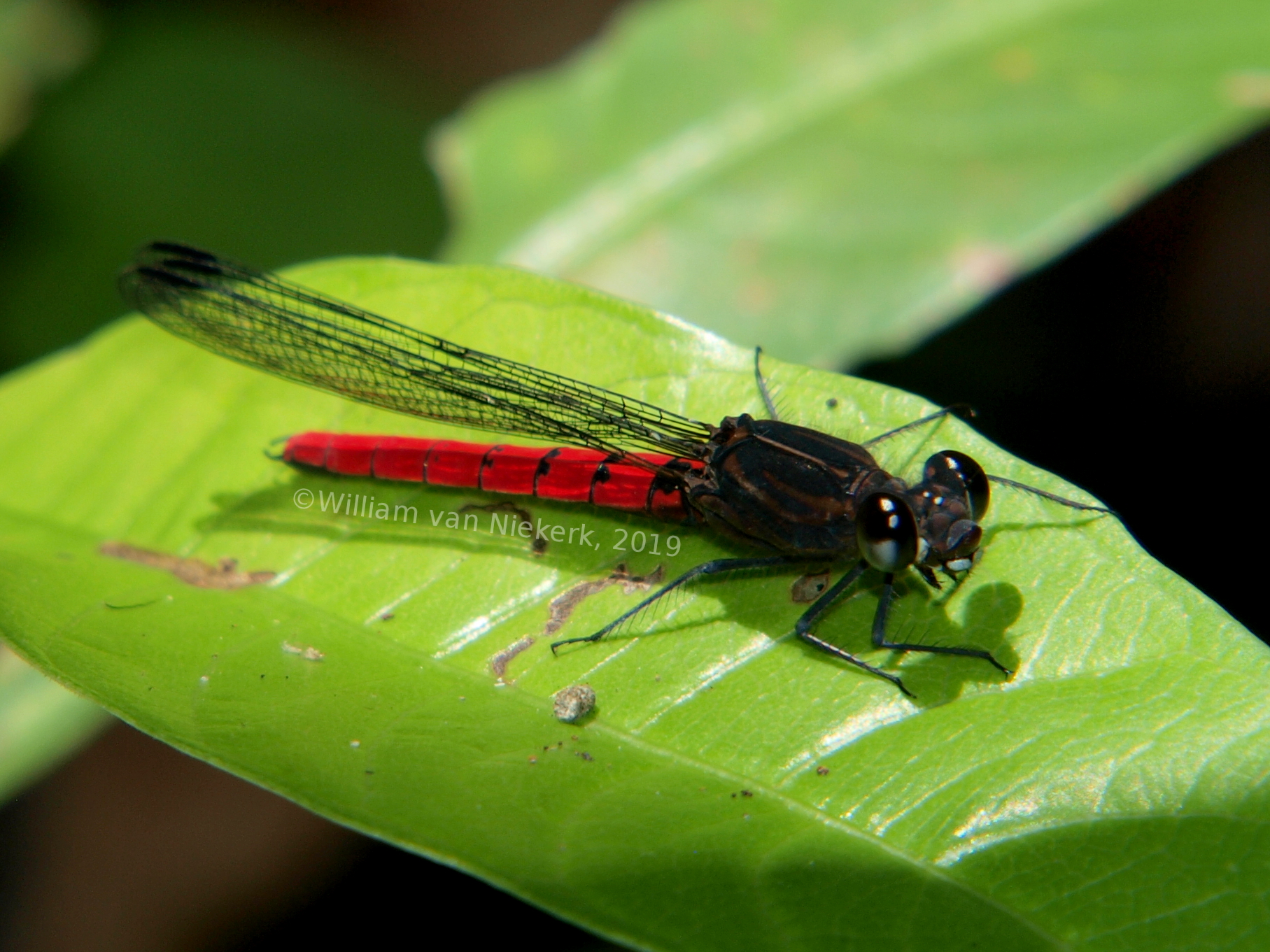
- Chlorocypha consueta (Ruby Jewel) – Largely to limited to East, and Eastern Central Africa. At Mutinondo, mostly in riparian thicket along small, permanent streams.
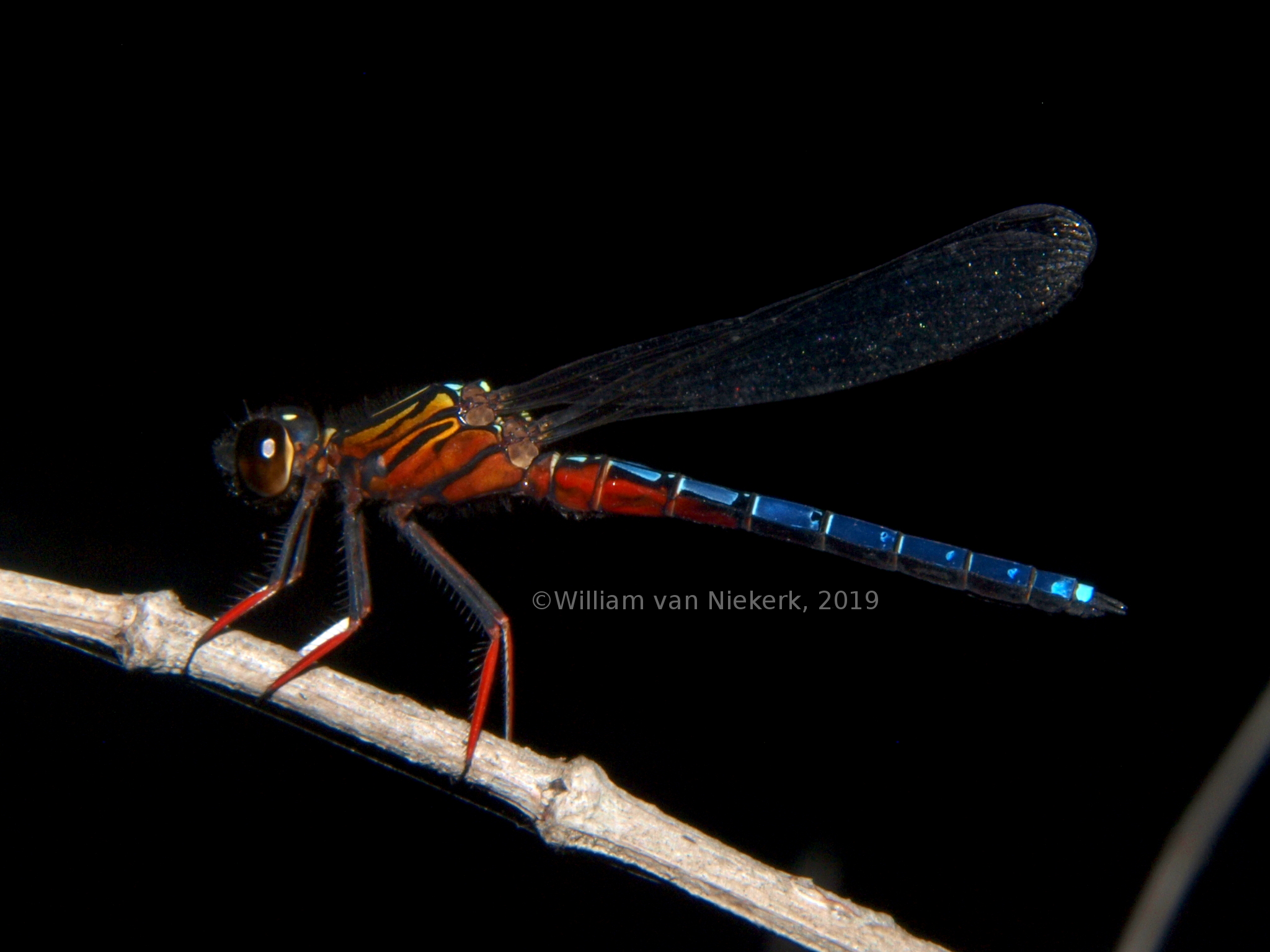
- Platycypha caligata (Dancing Jewel) – Widespread, common. At Mutinondo, usually in fast-flowing, rocky sections with well-developed riparian thicket or woodland.
Demoiselles – Family Calopterygidae
Large but delicately built damselflies, usually found in forest or other dense vegetation, often some distance from water.
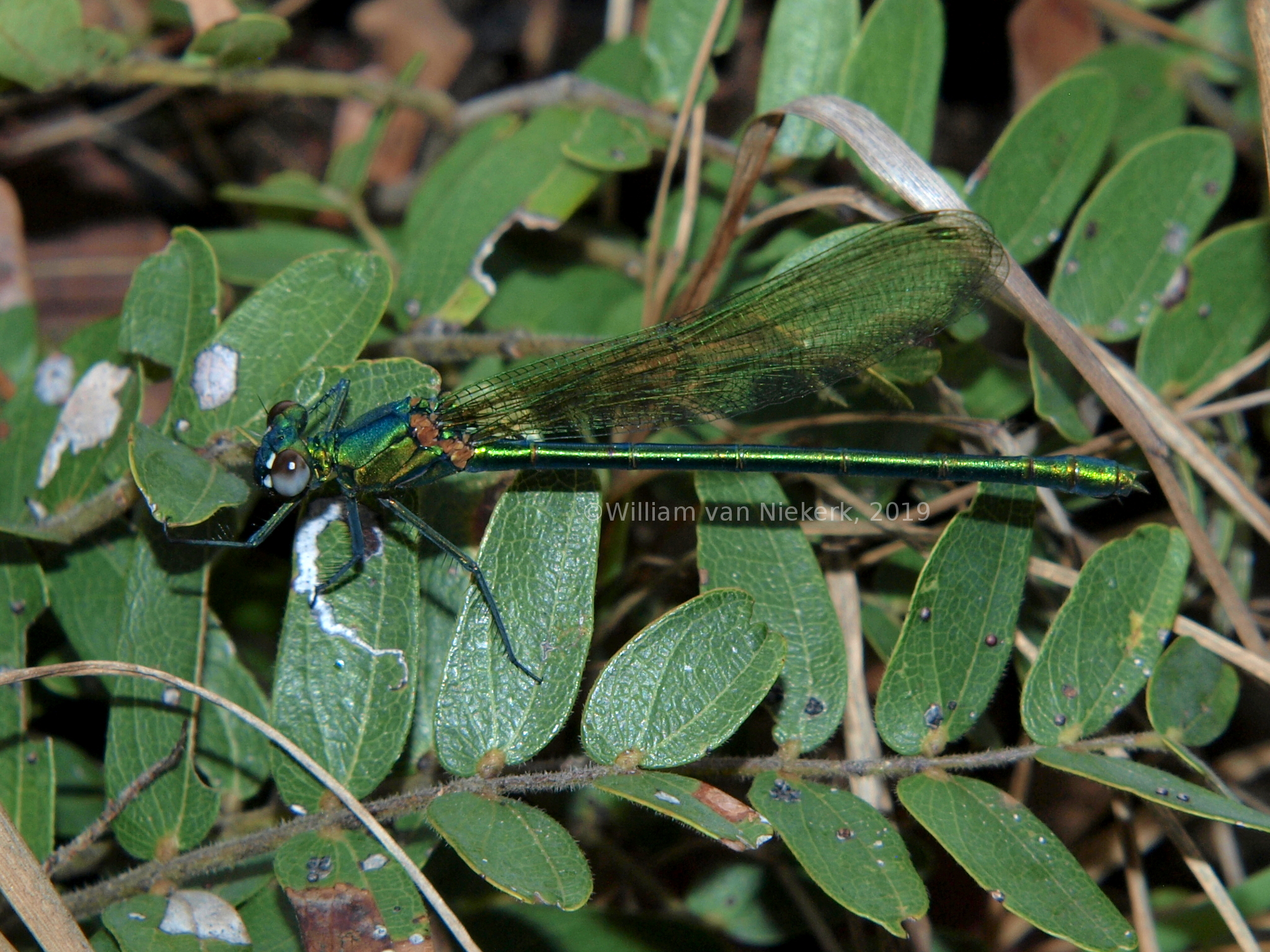
- Umma electa (Metallic Sparklewing) – Known from southern D.R.C., Angola and Zambia. At Mutinondo, occasionally found along small, permanent streams, especially below Mayense dambo.
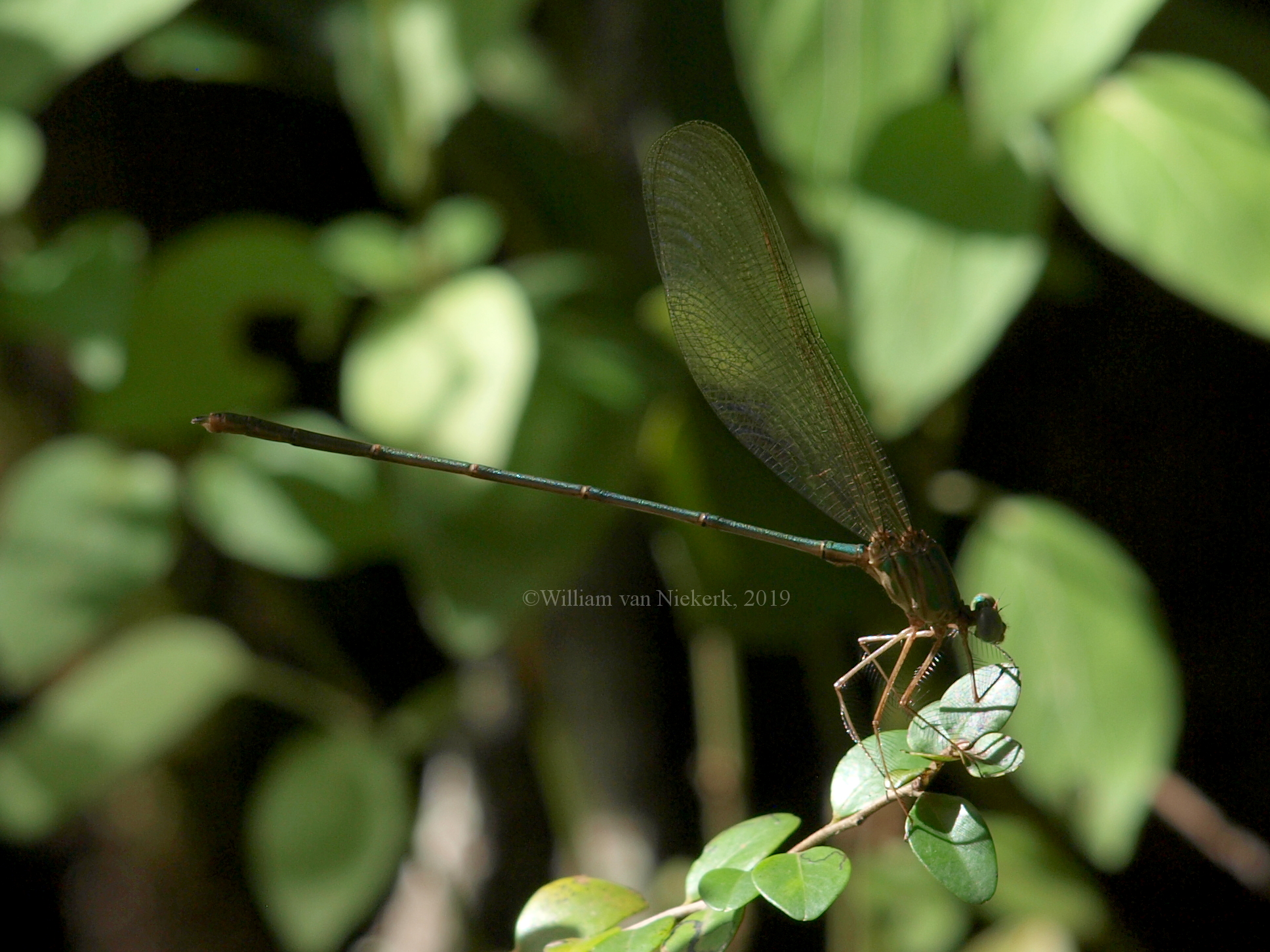
- Phaon iridipennis (Glistening Demoiselle) - largely restricted to dense mushitu, spreading into more open riverside vegetation late in the rains.


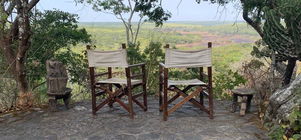
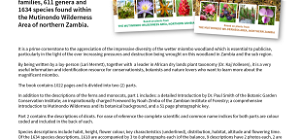
Share This Page